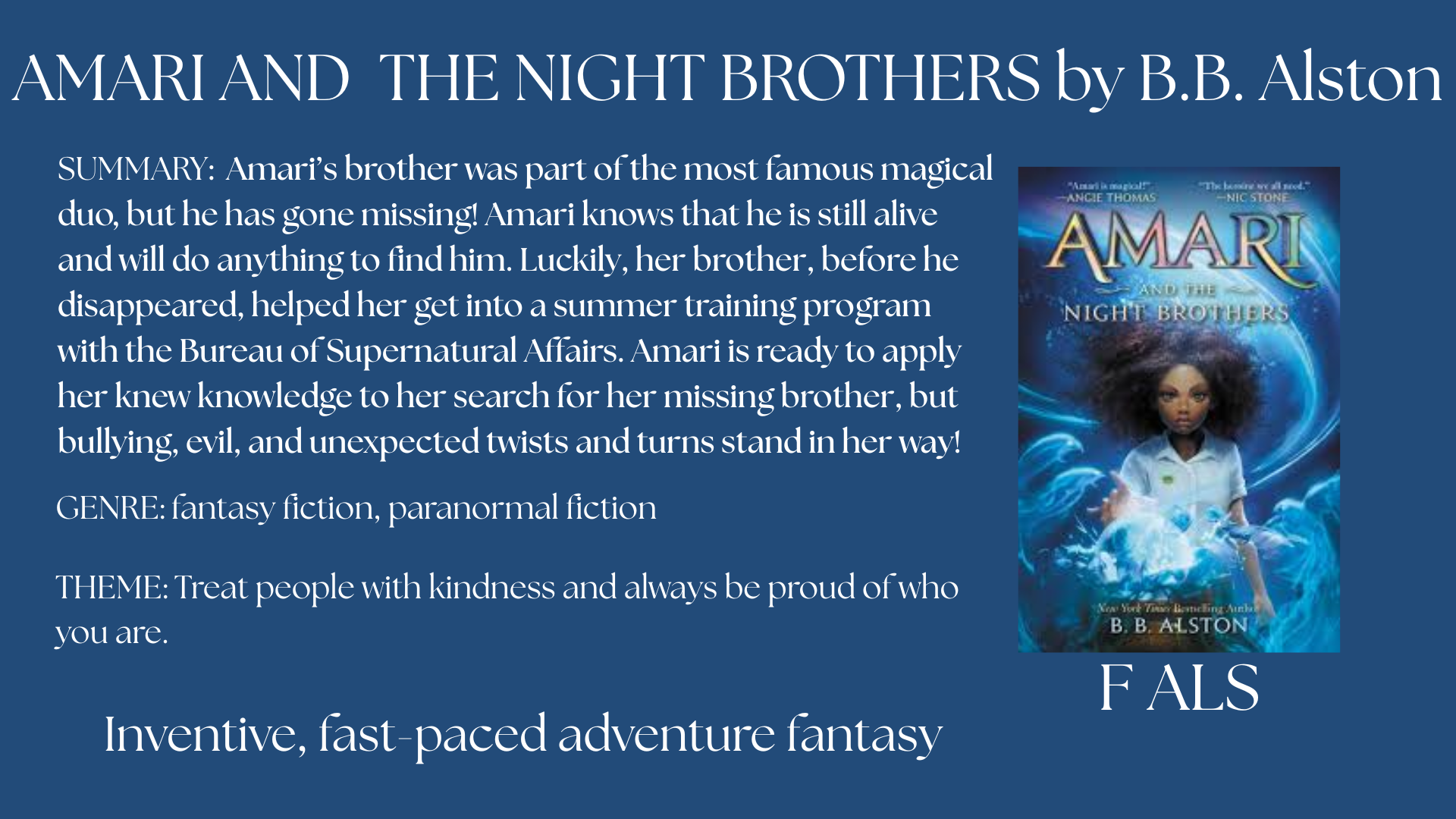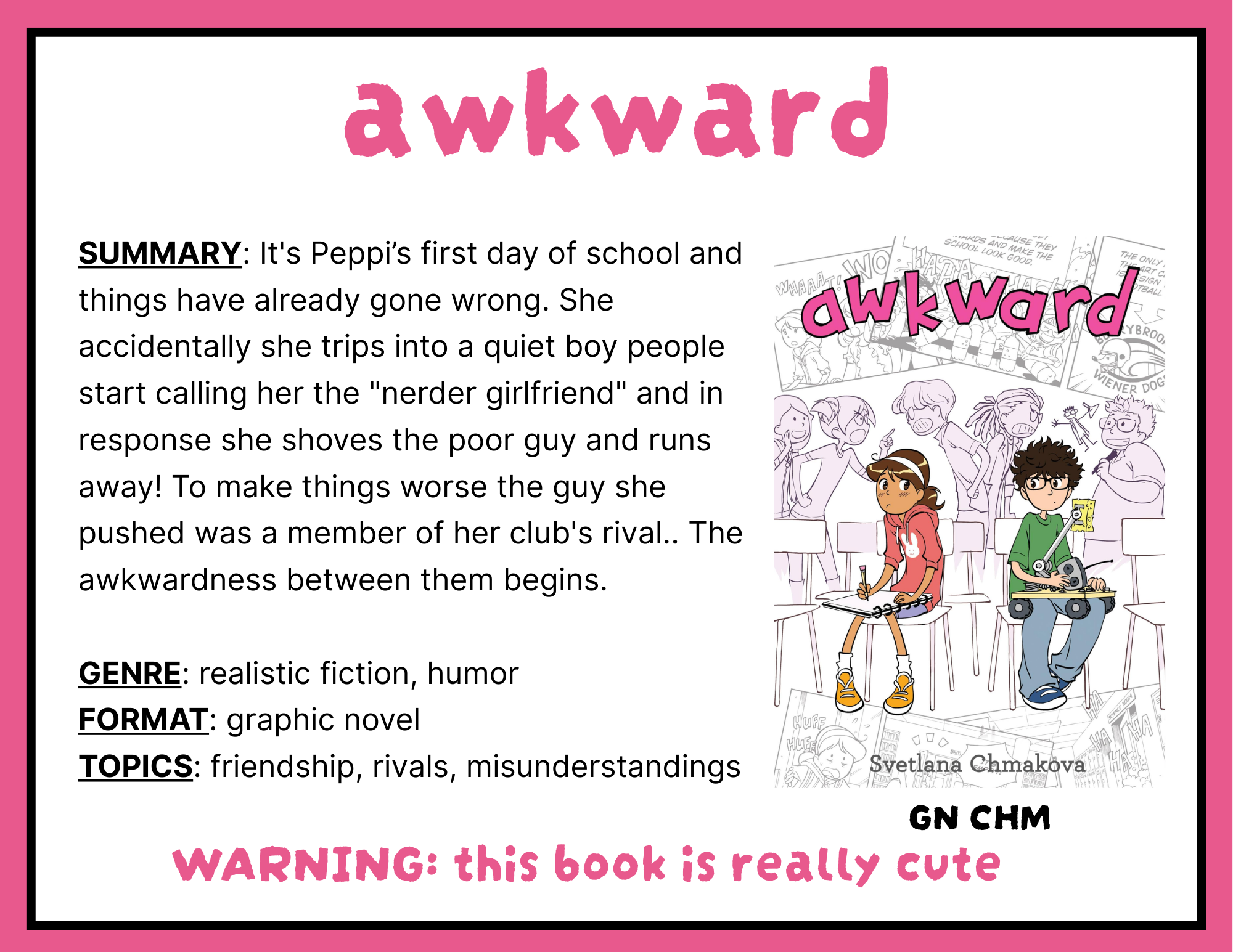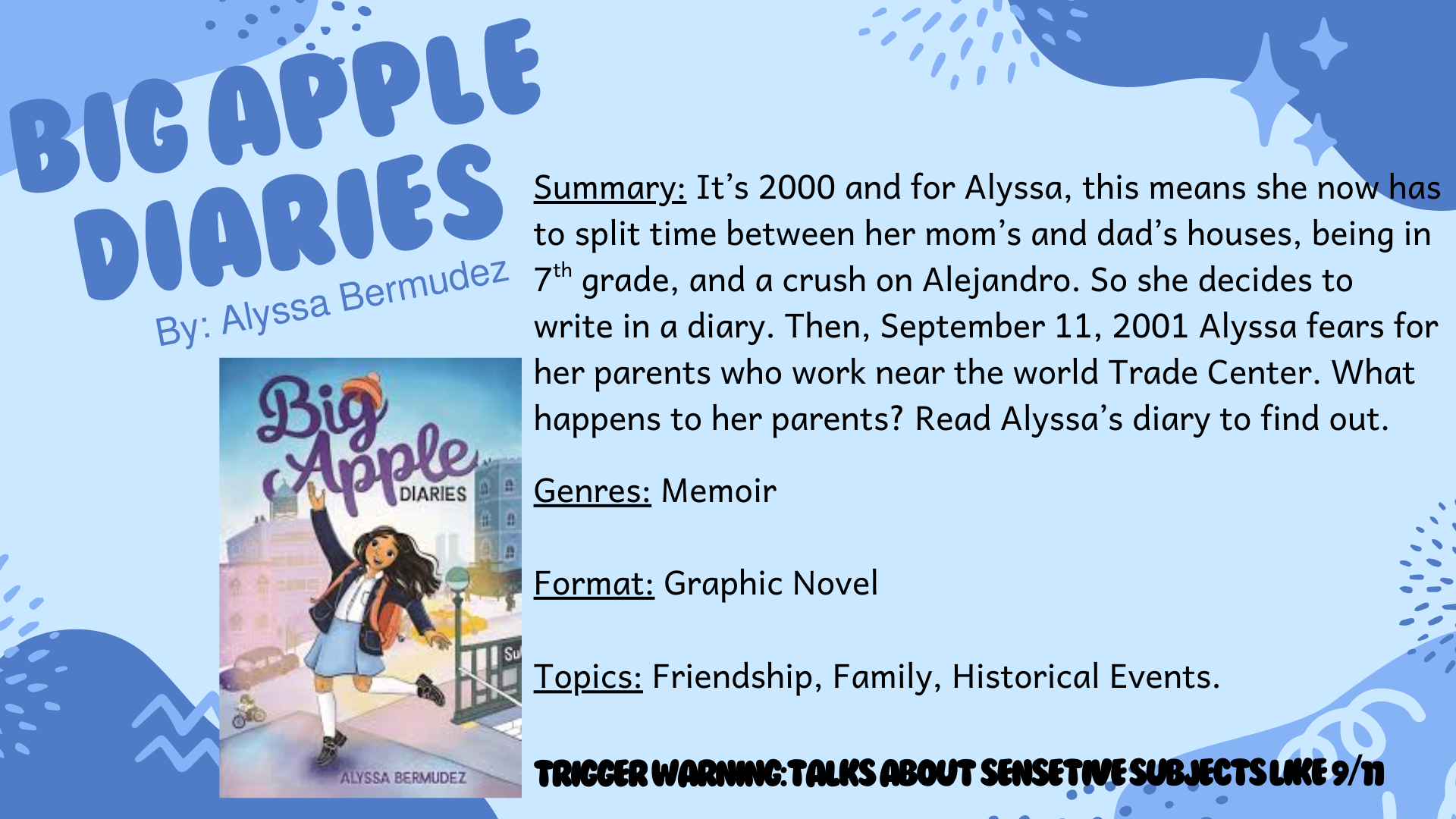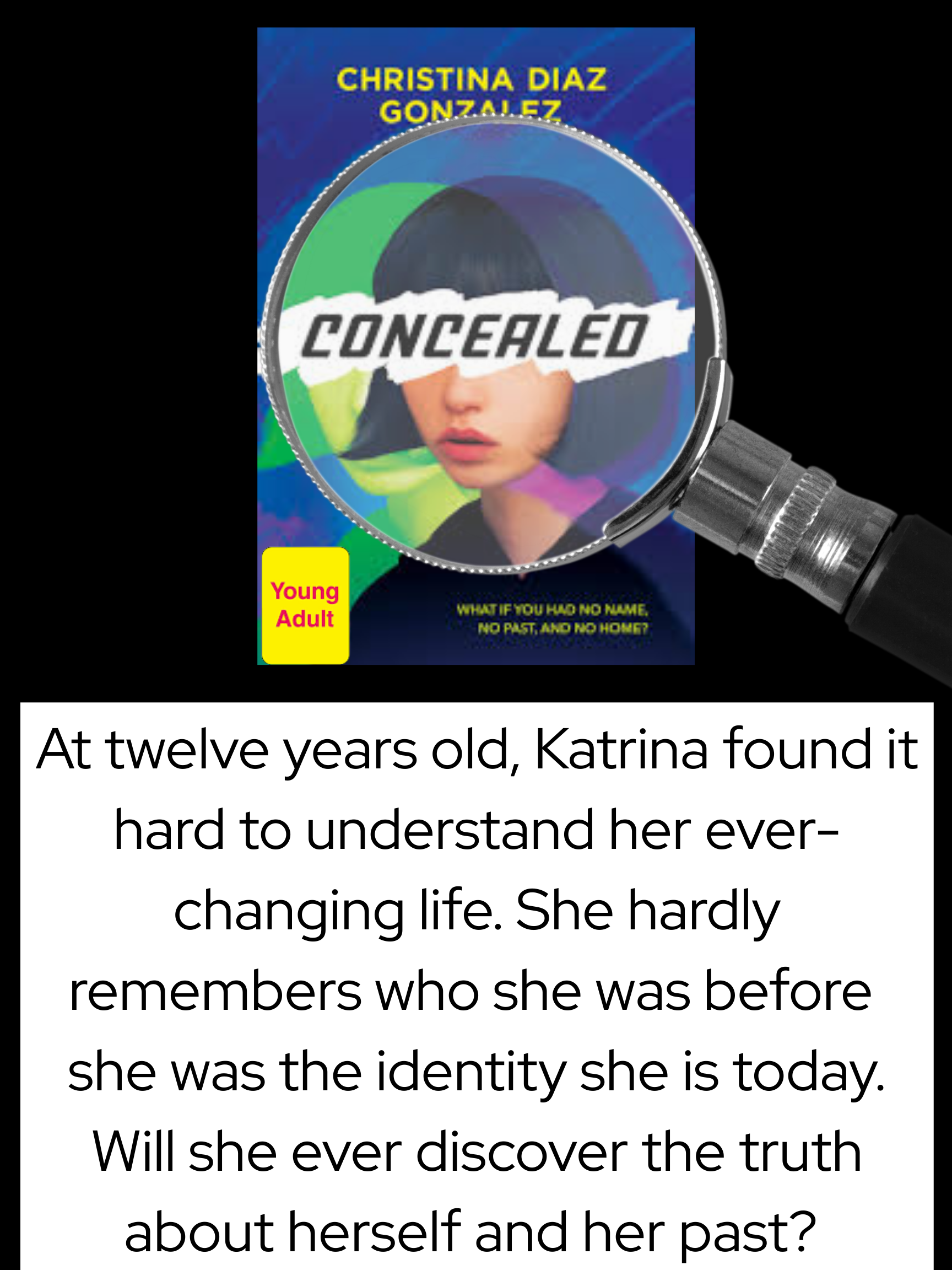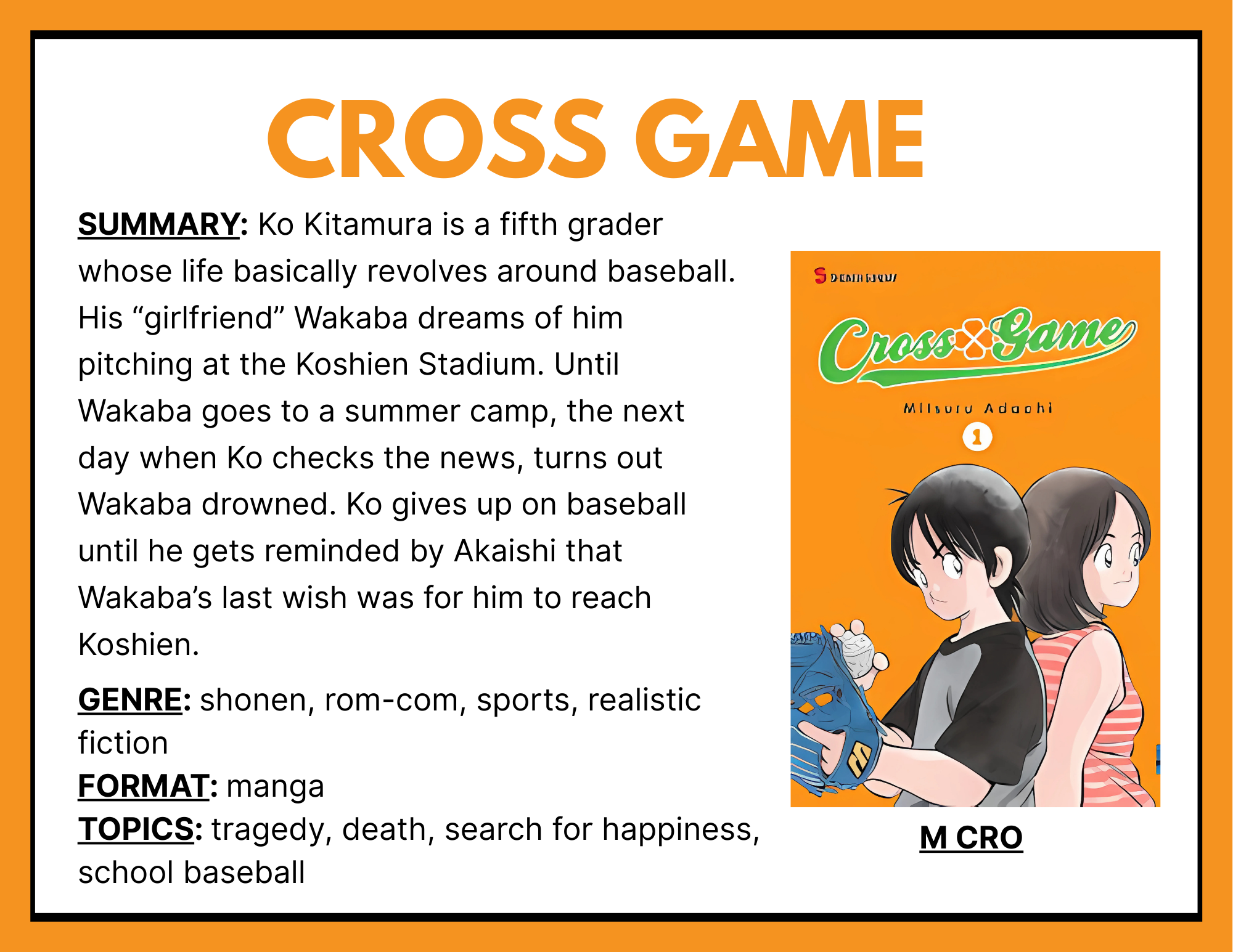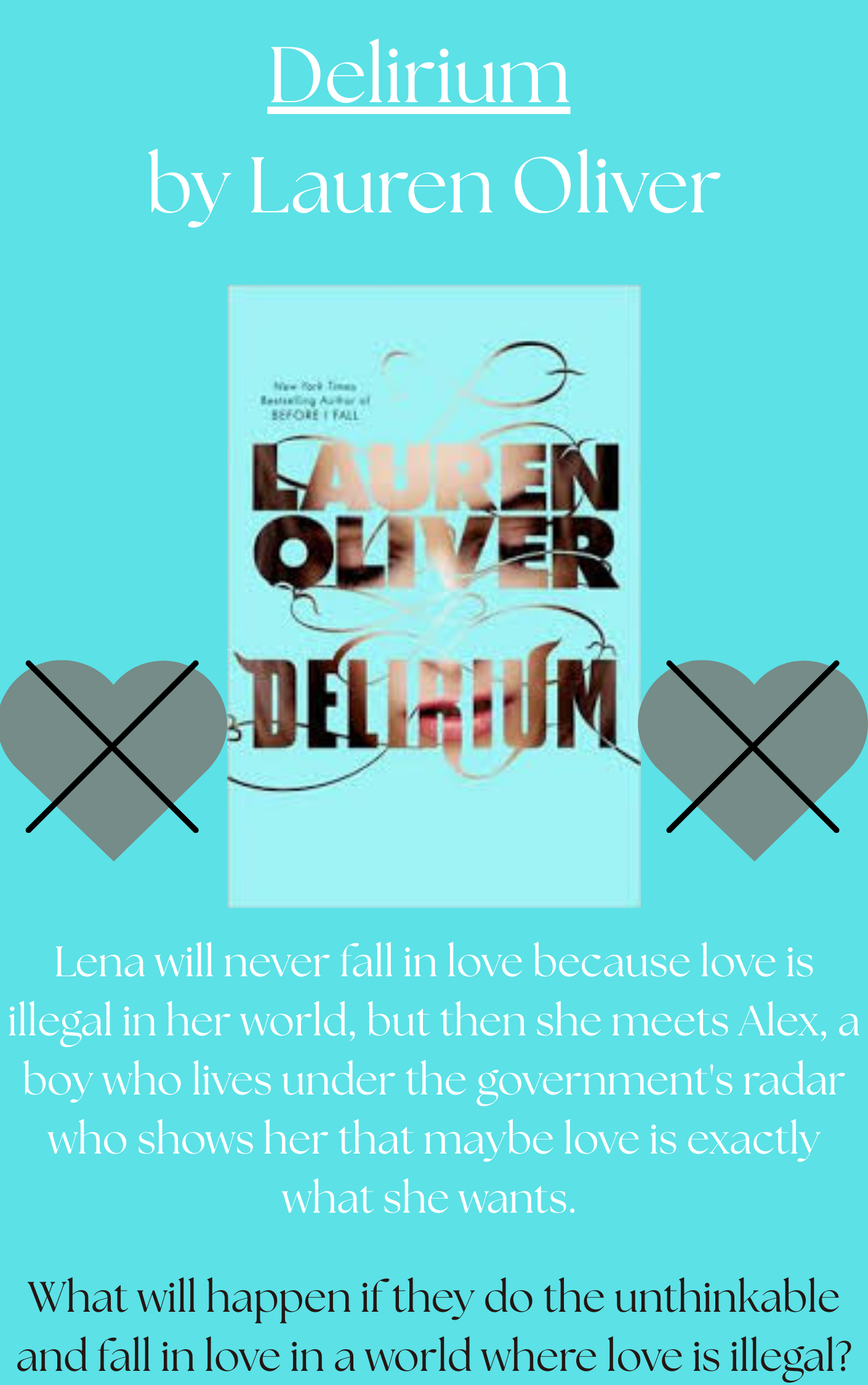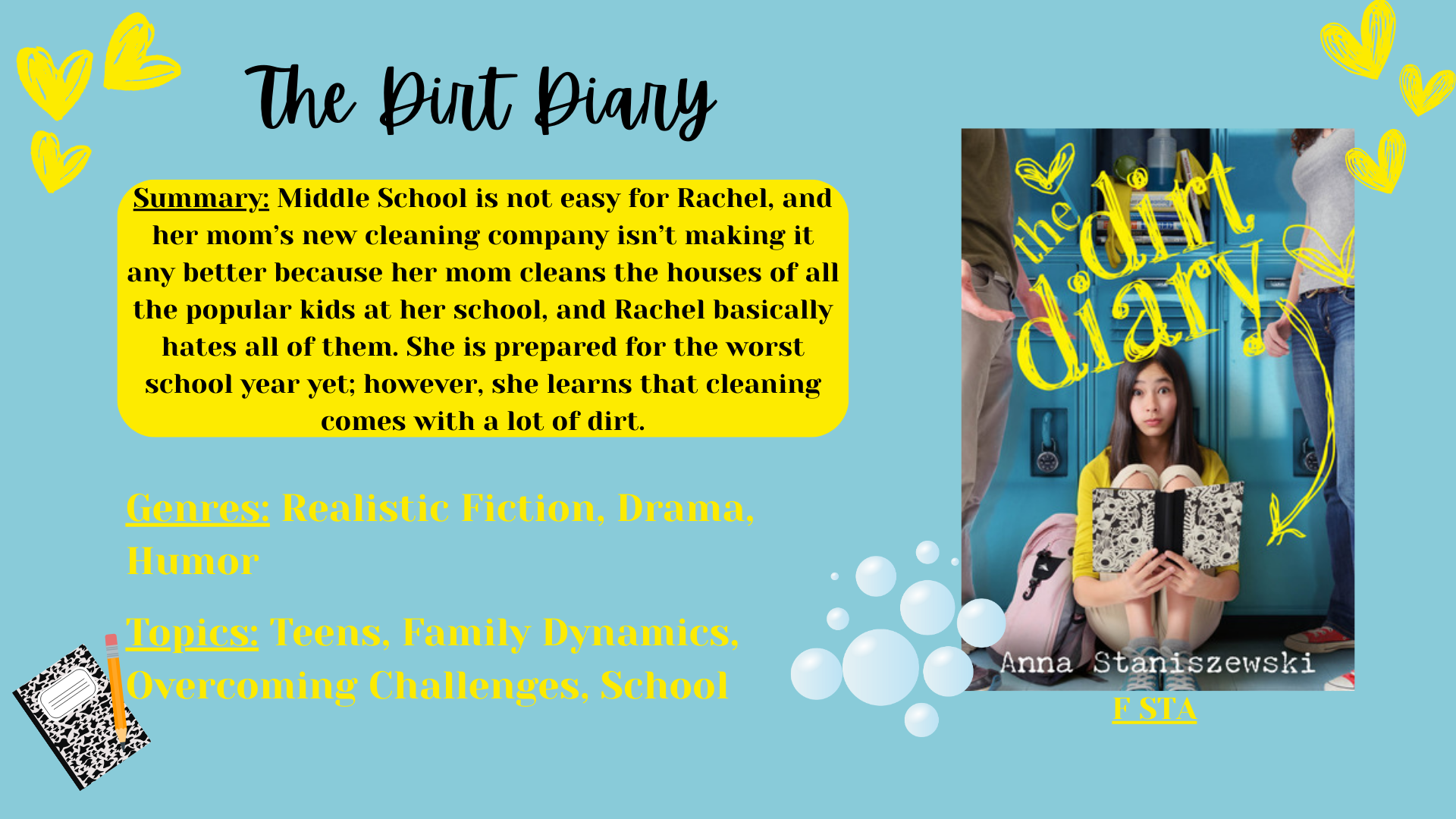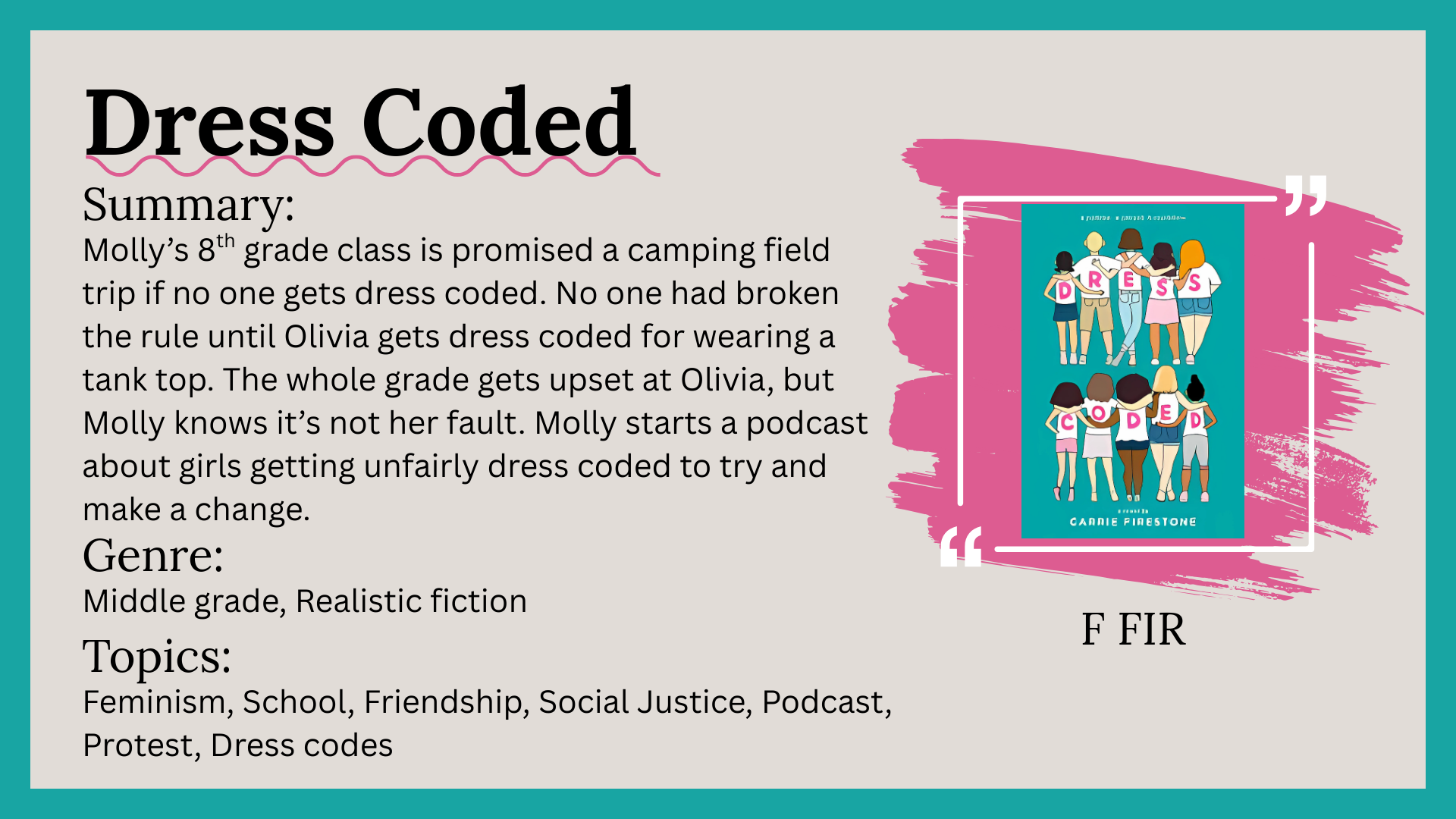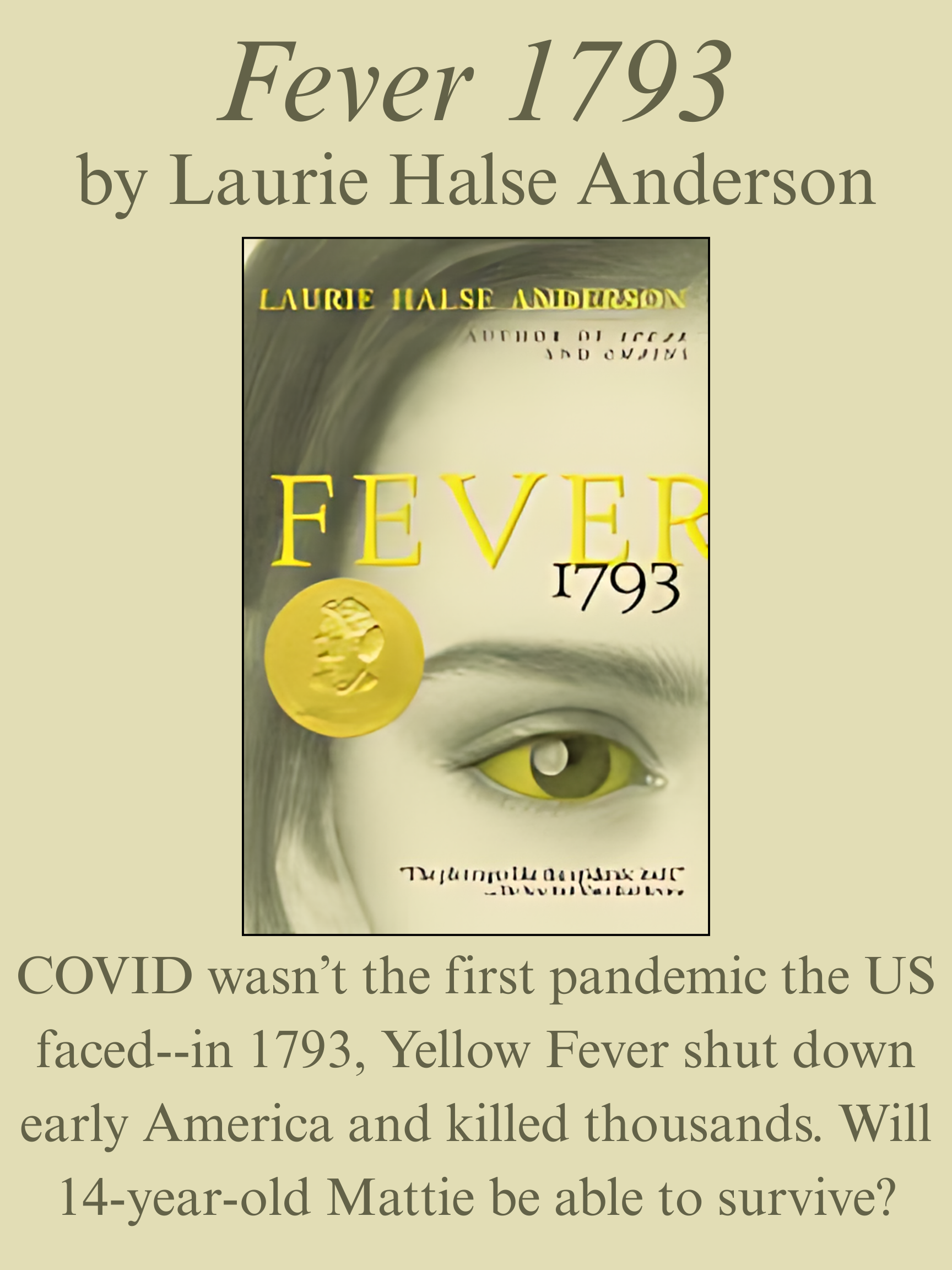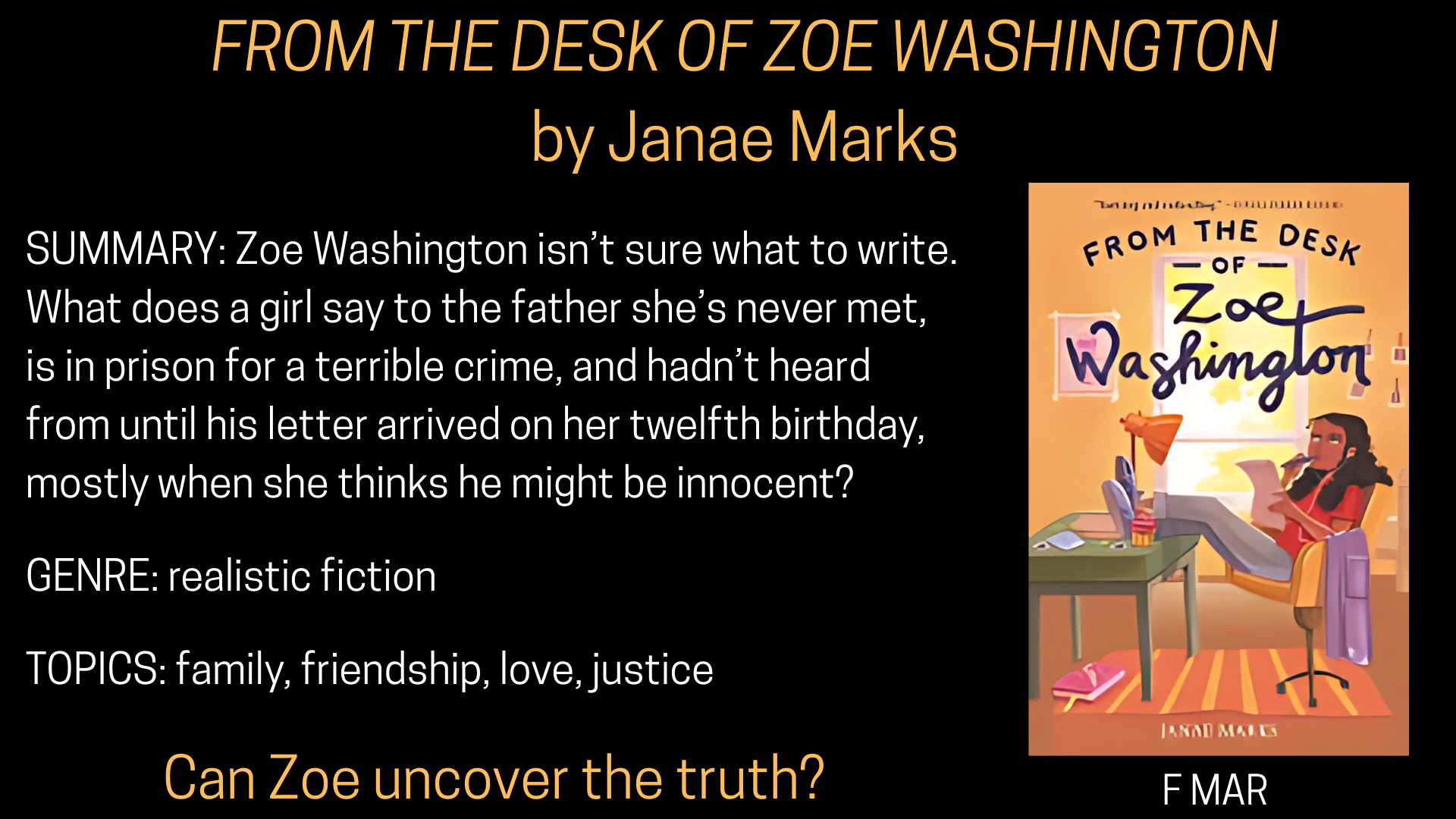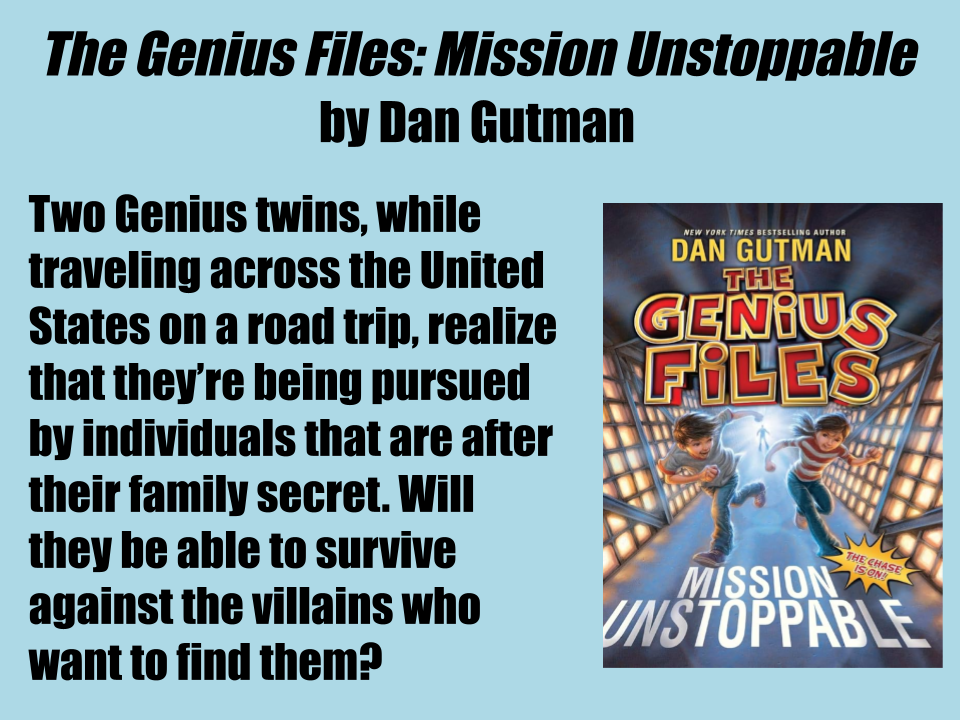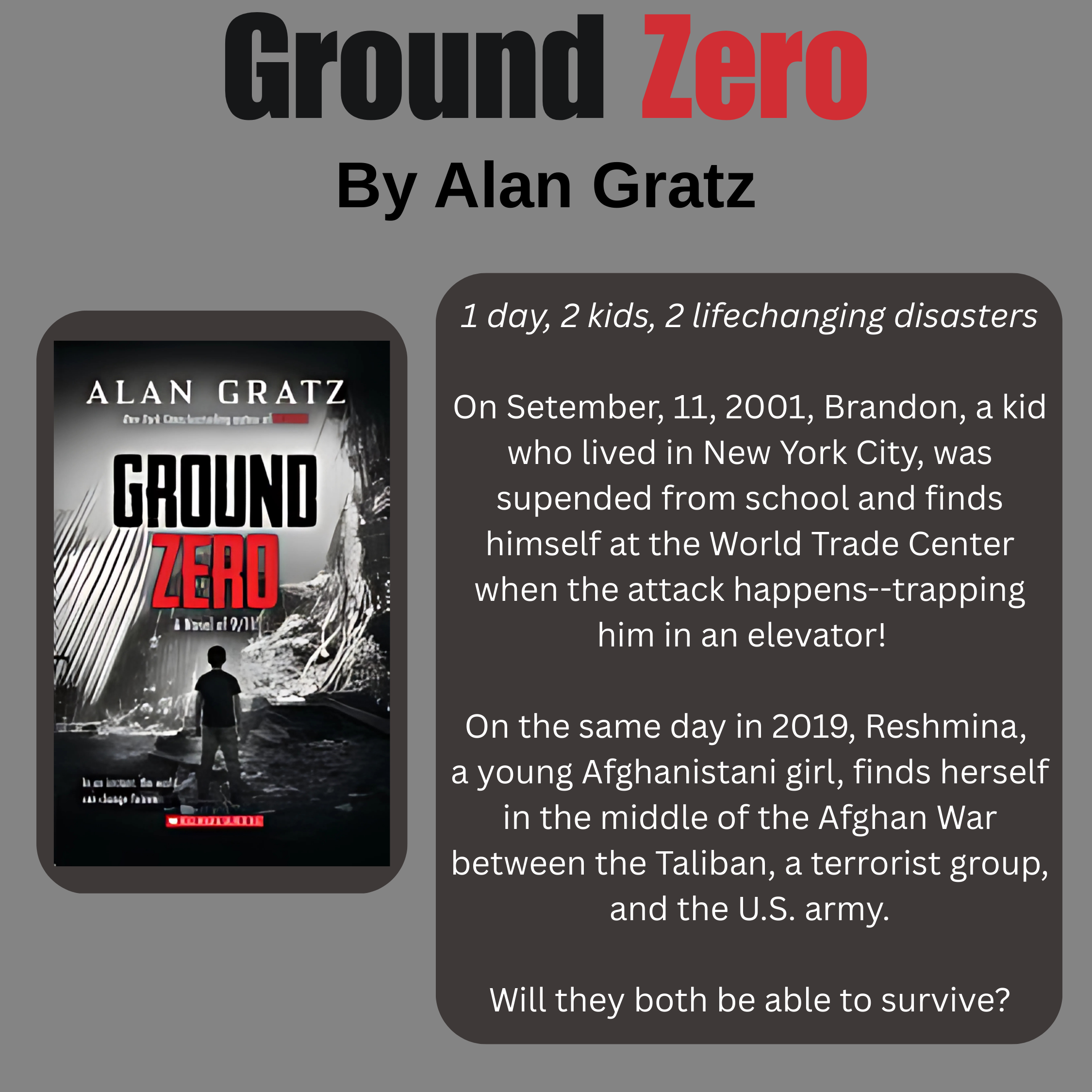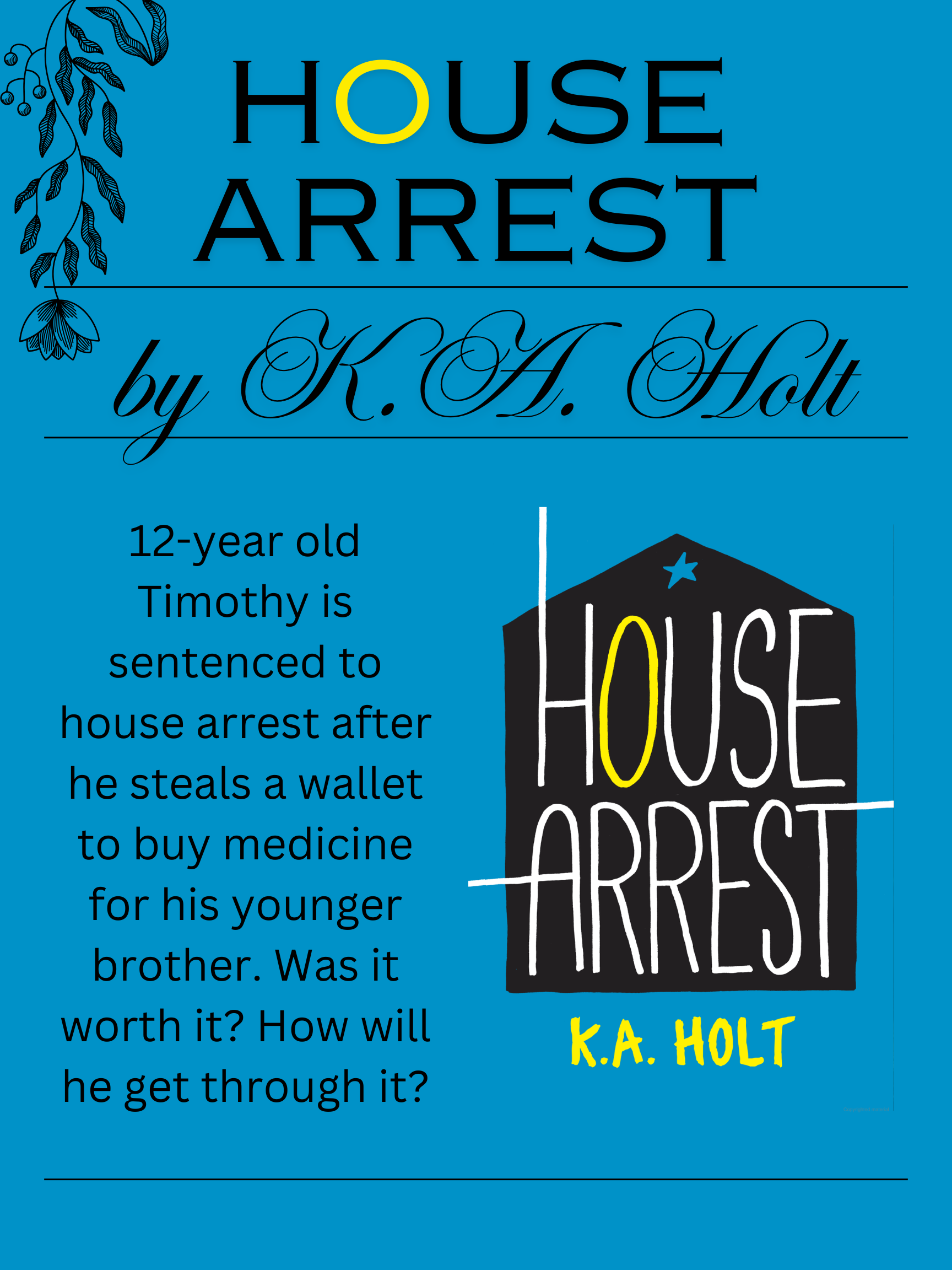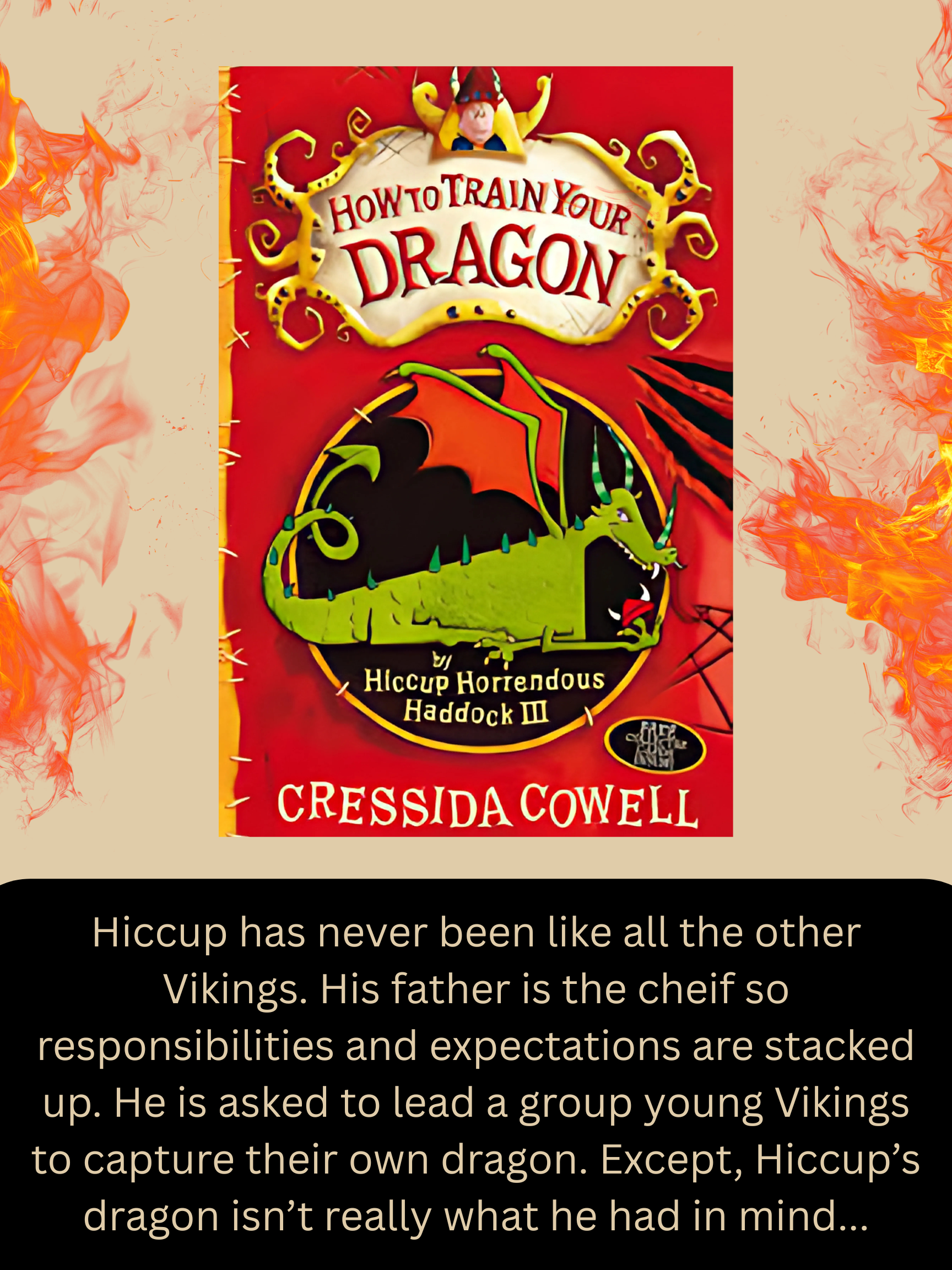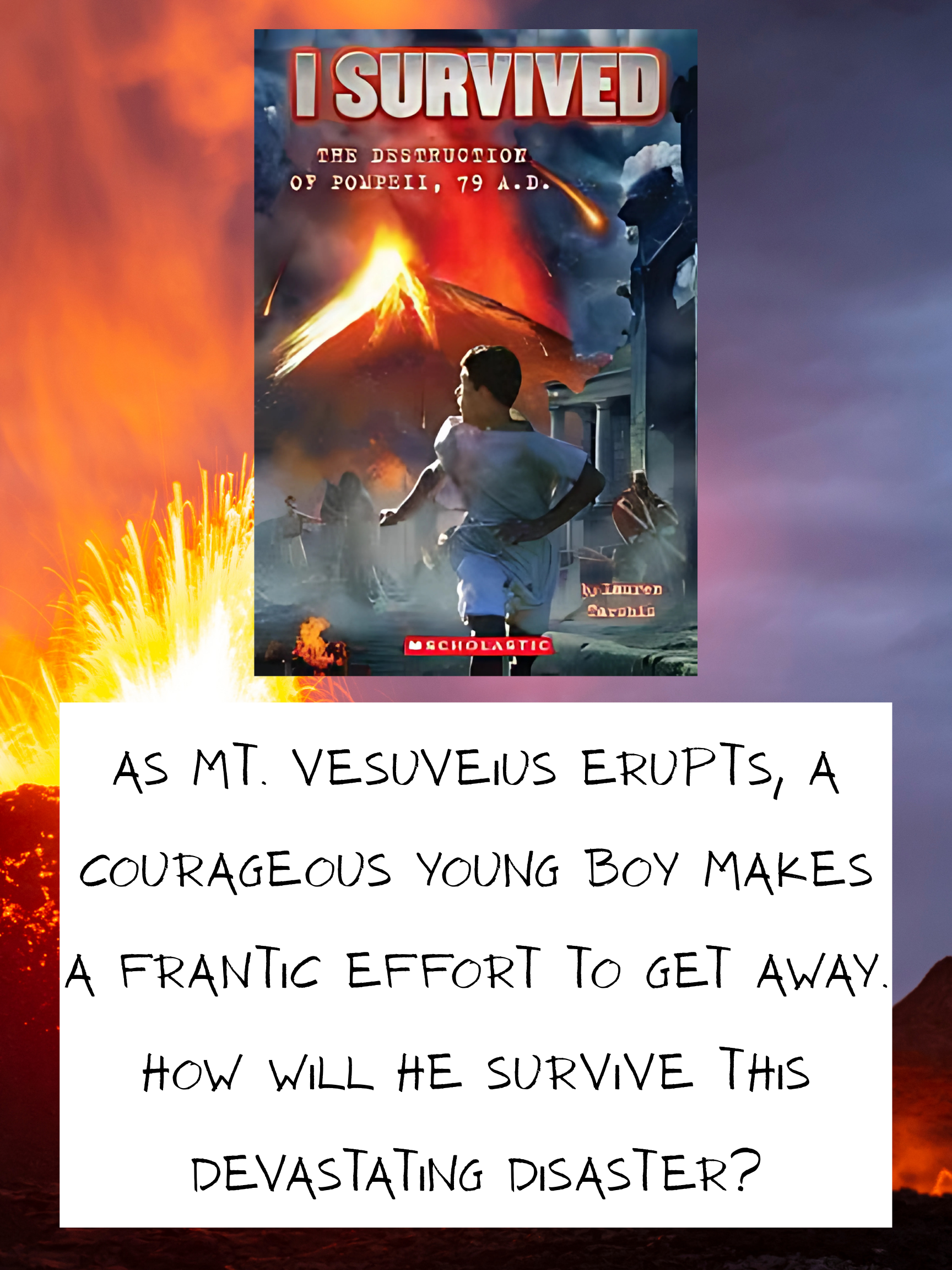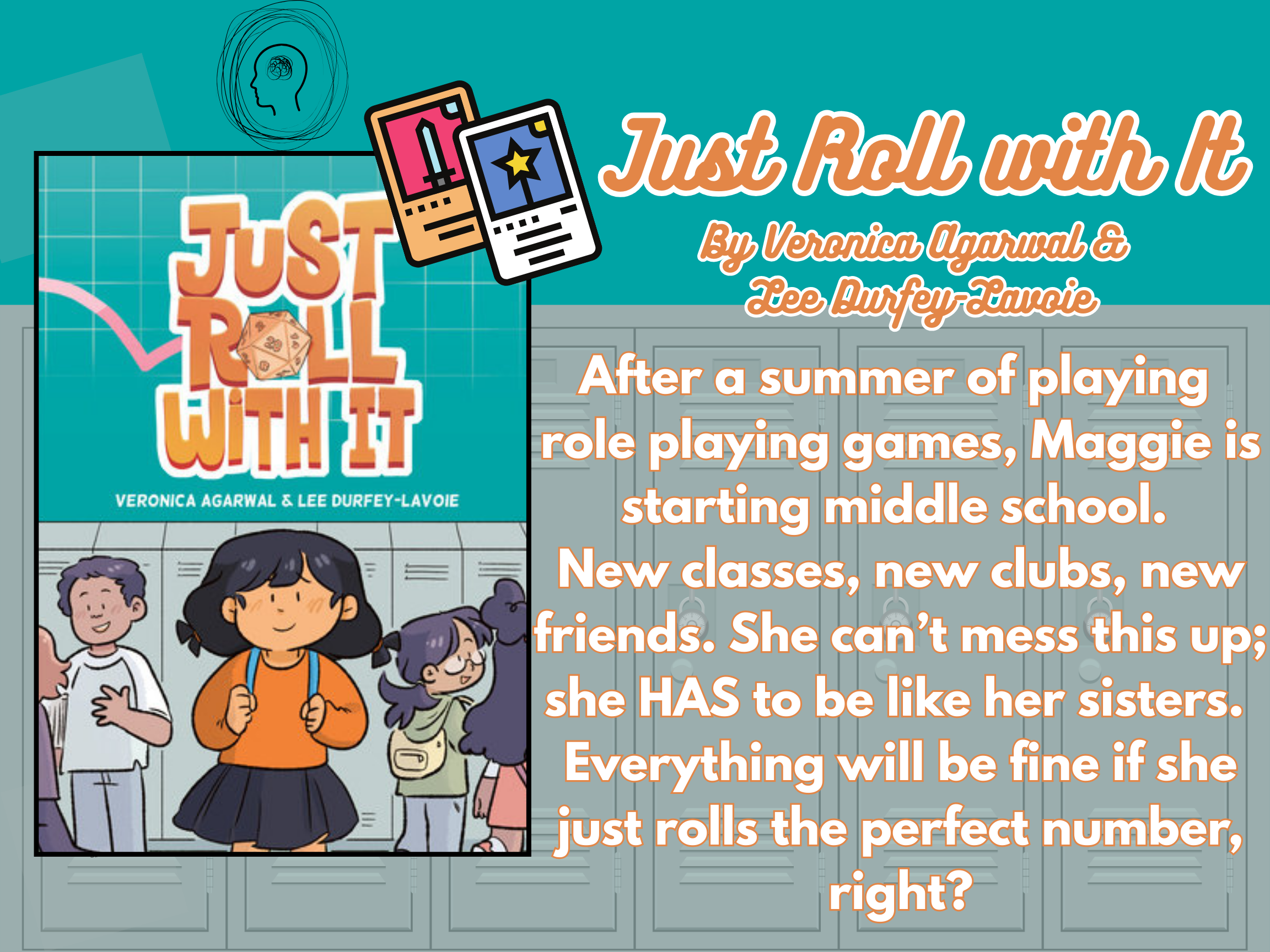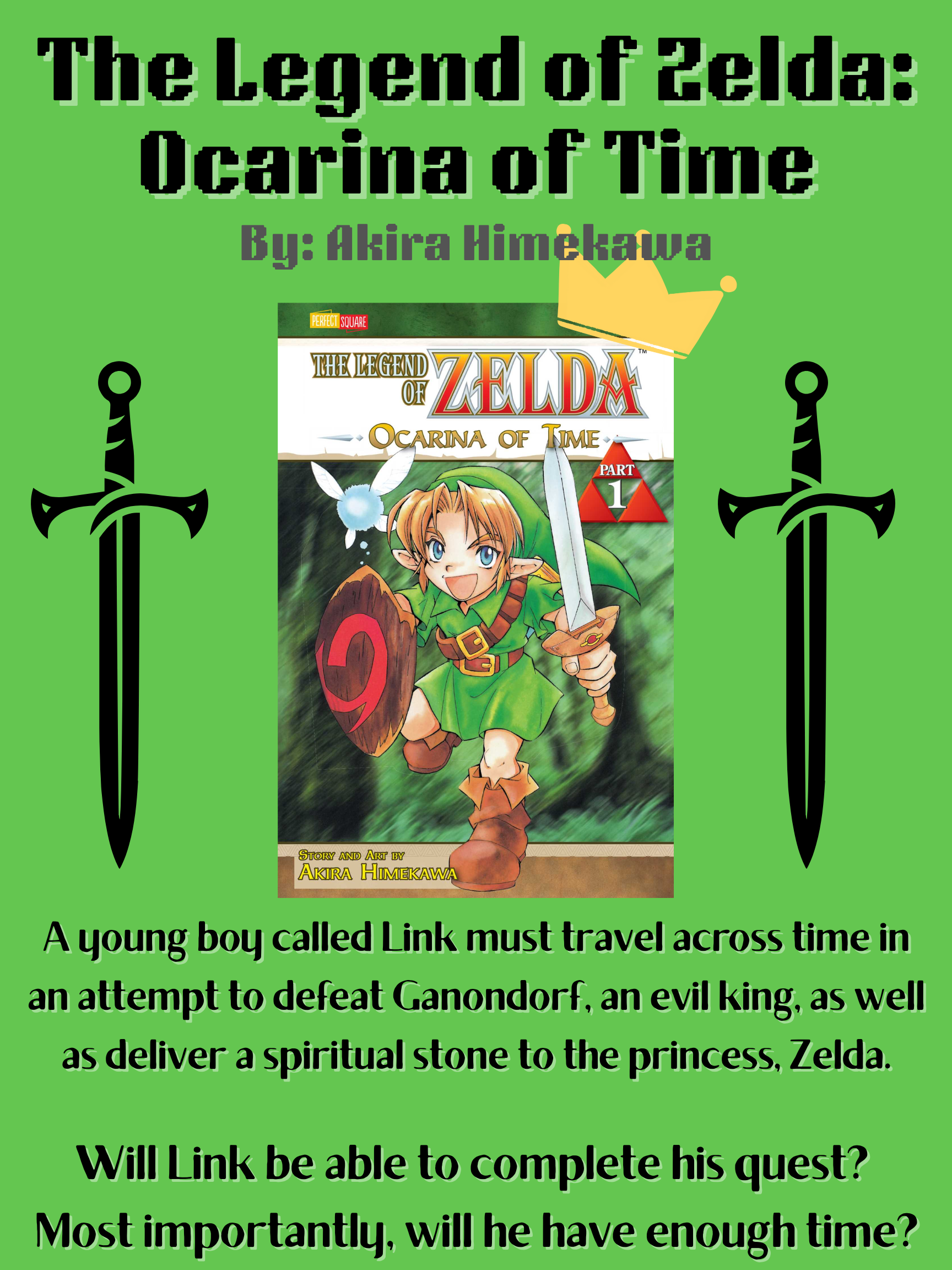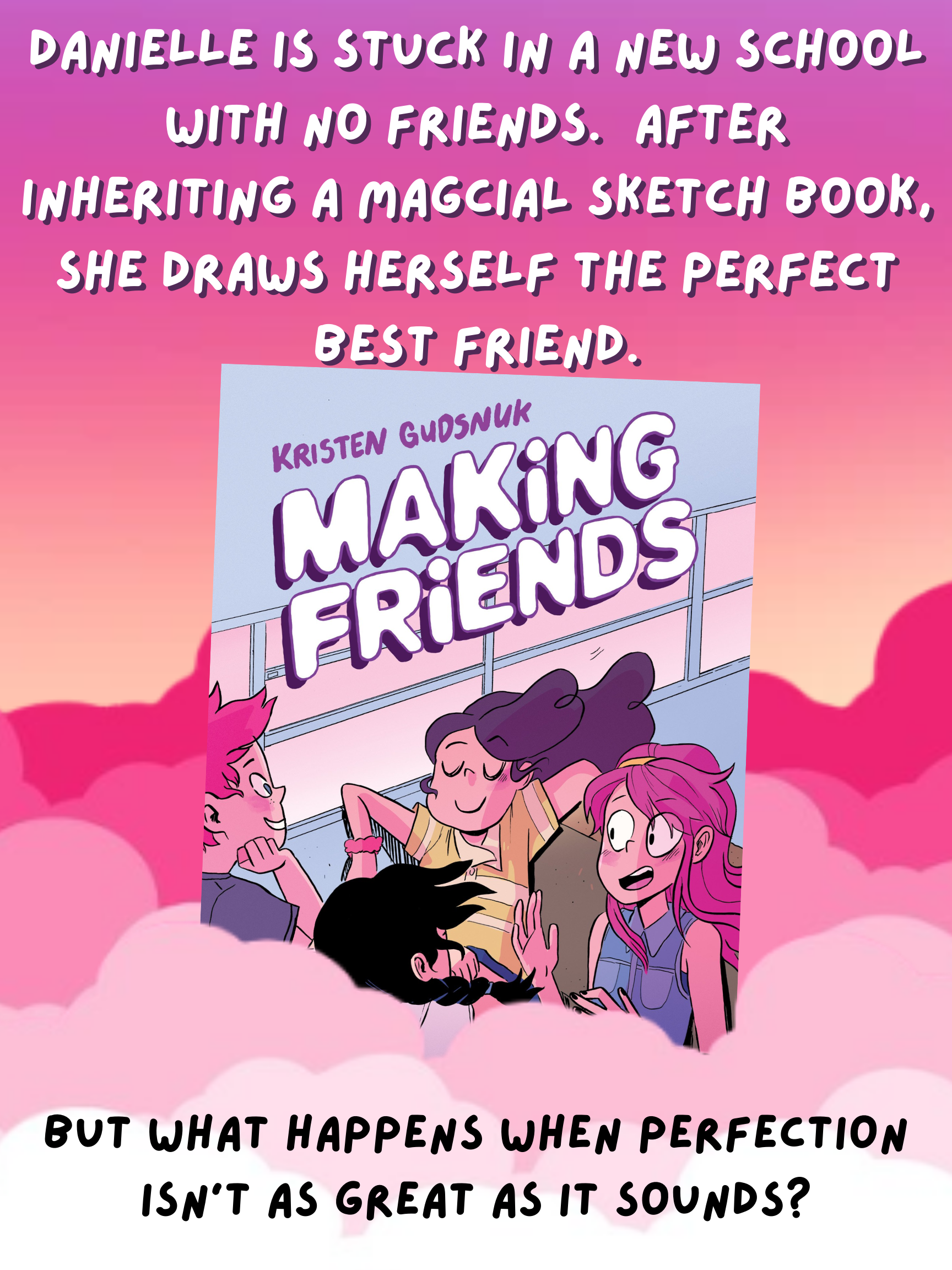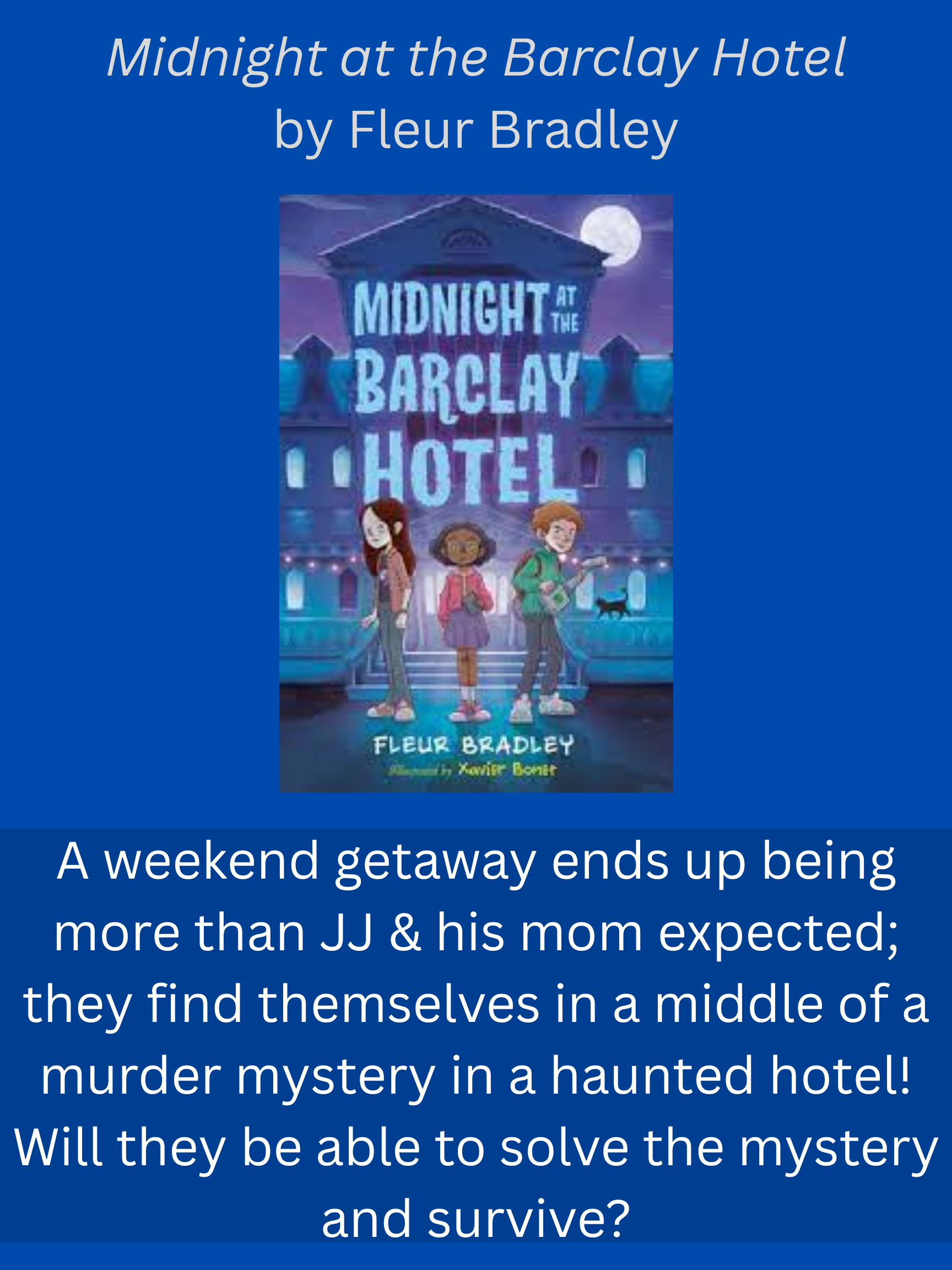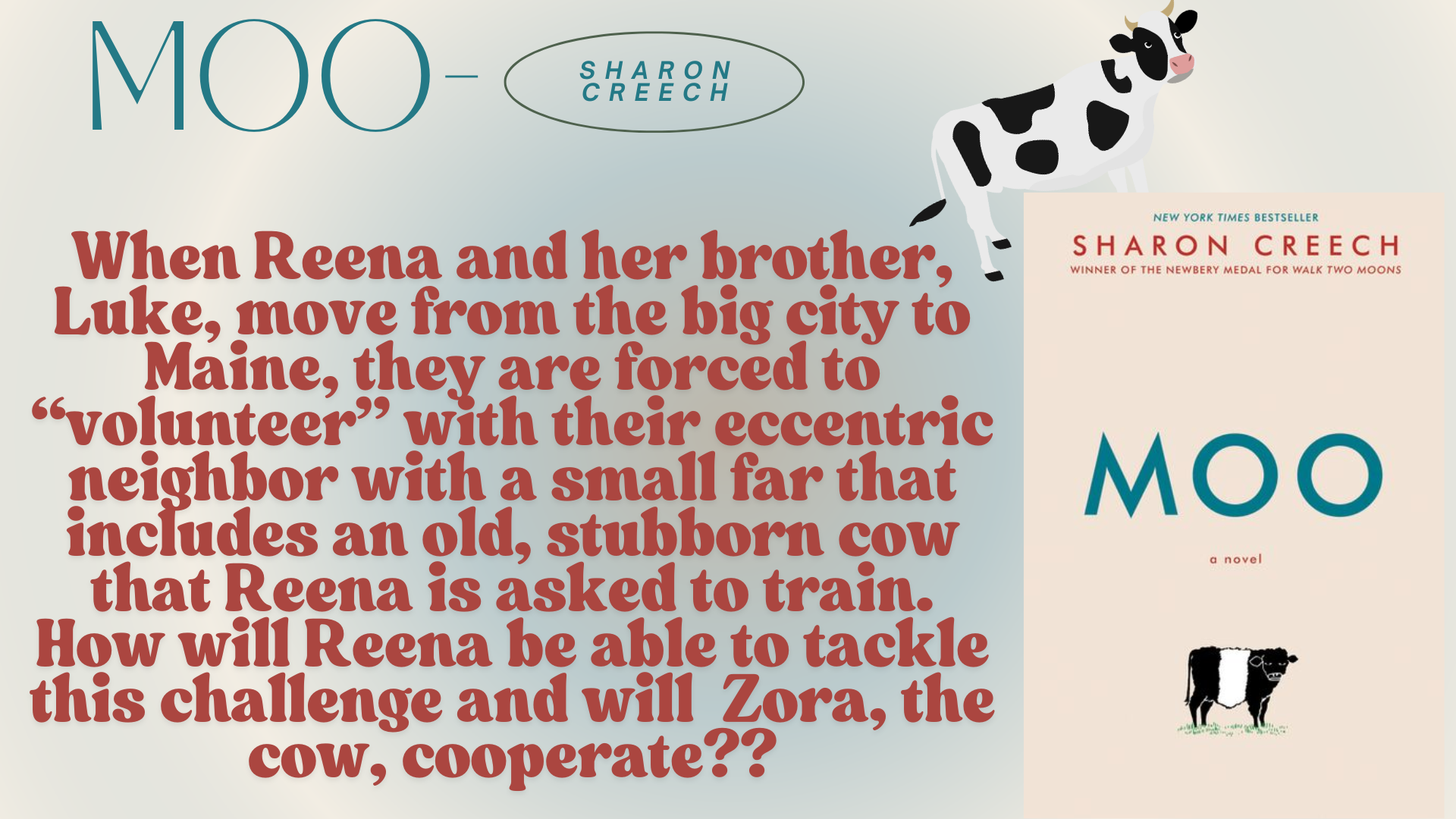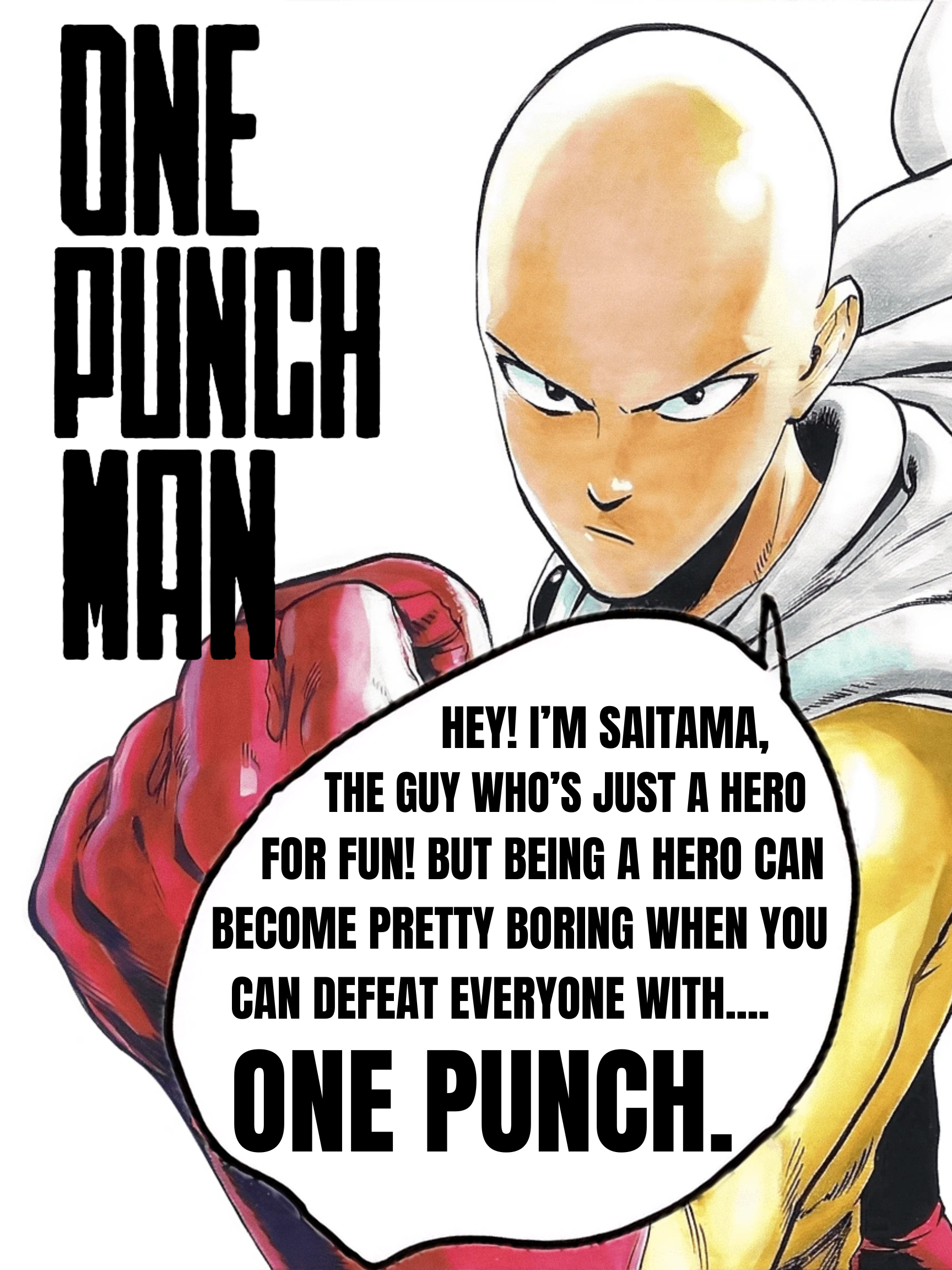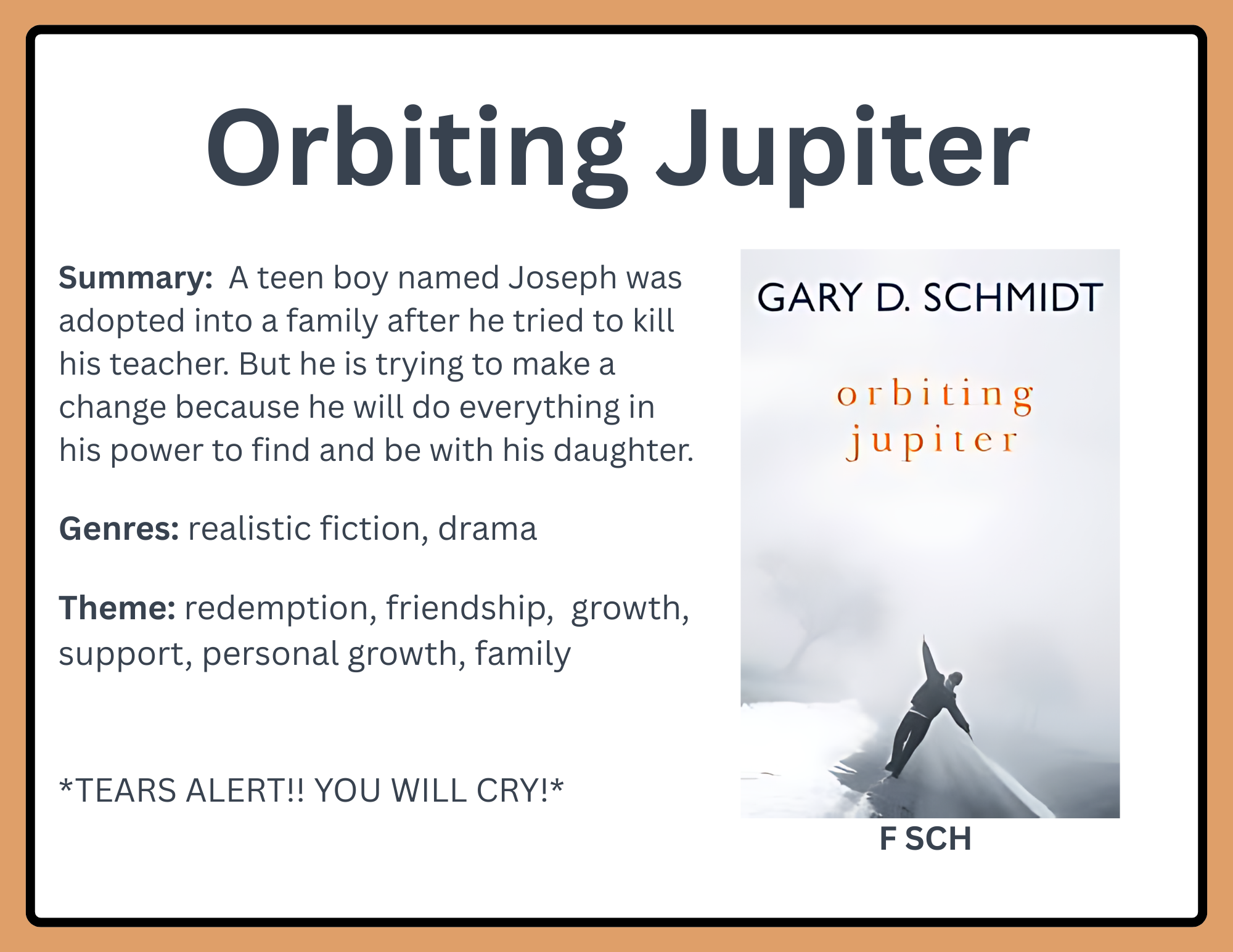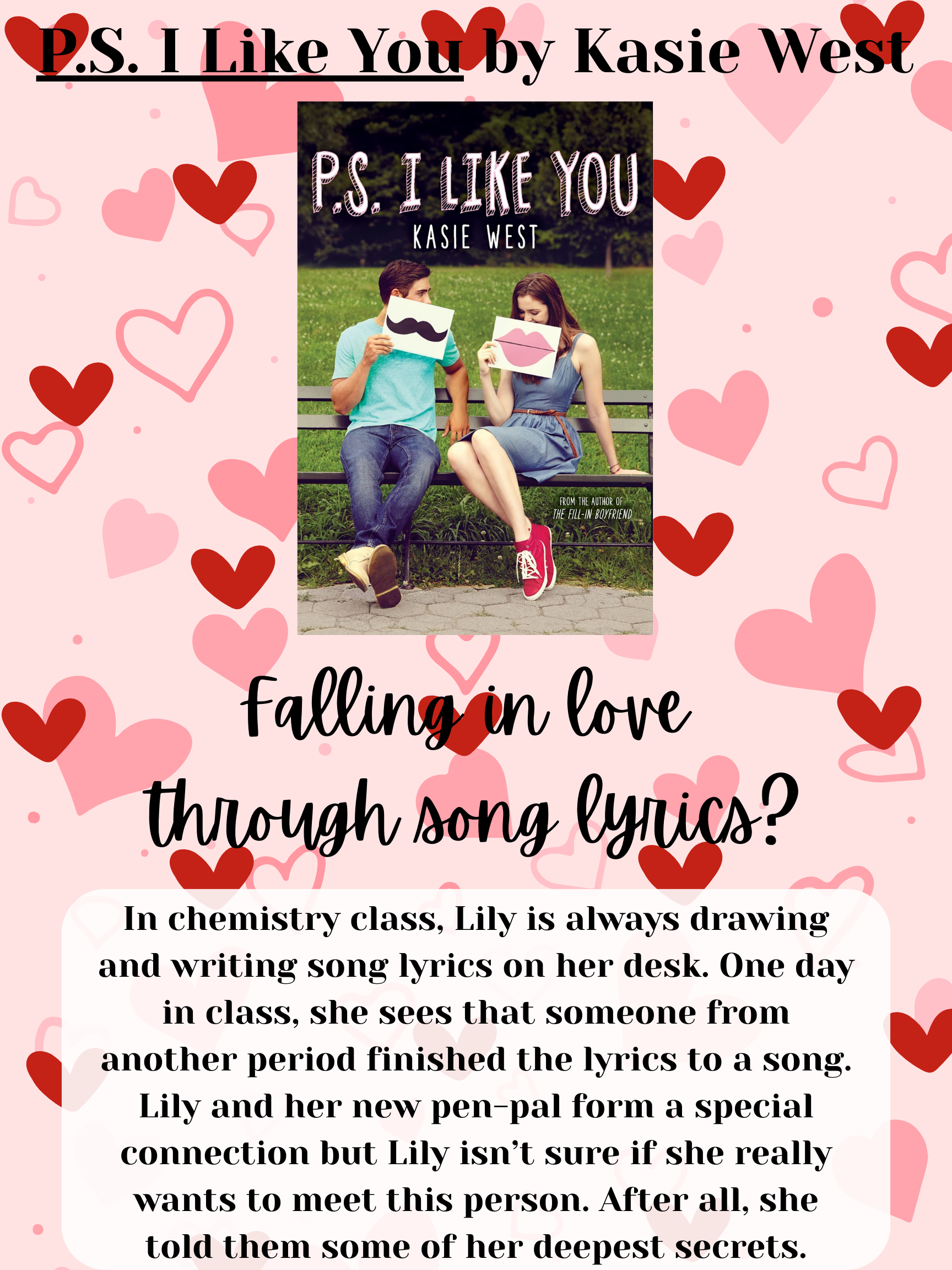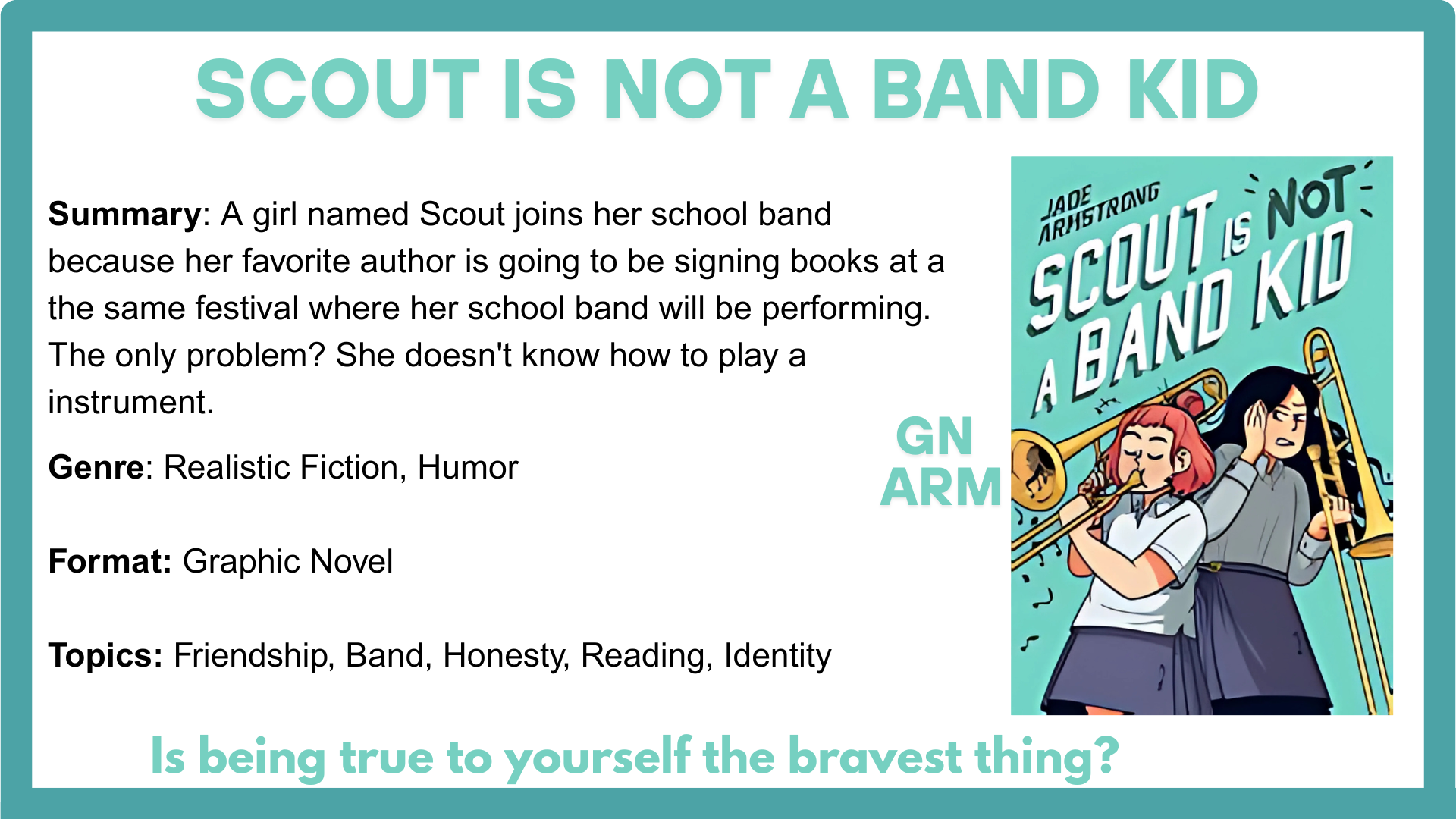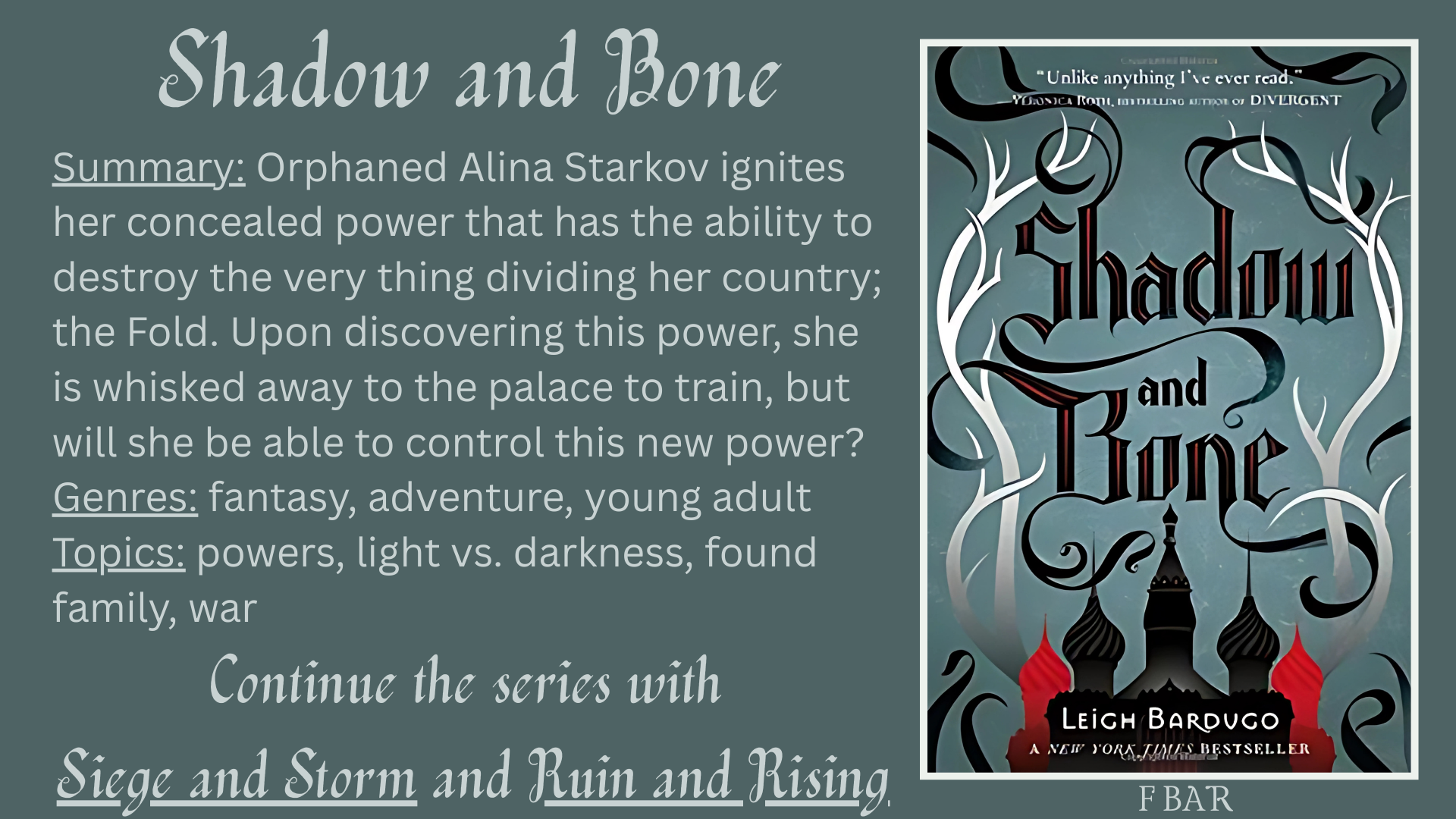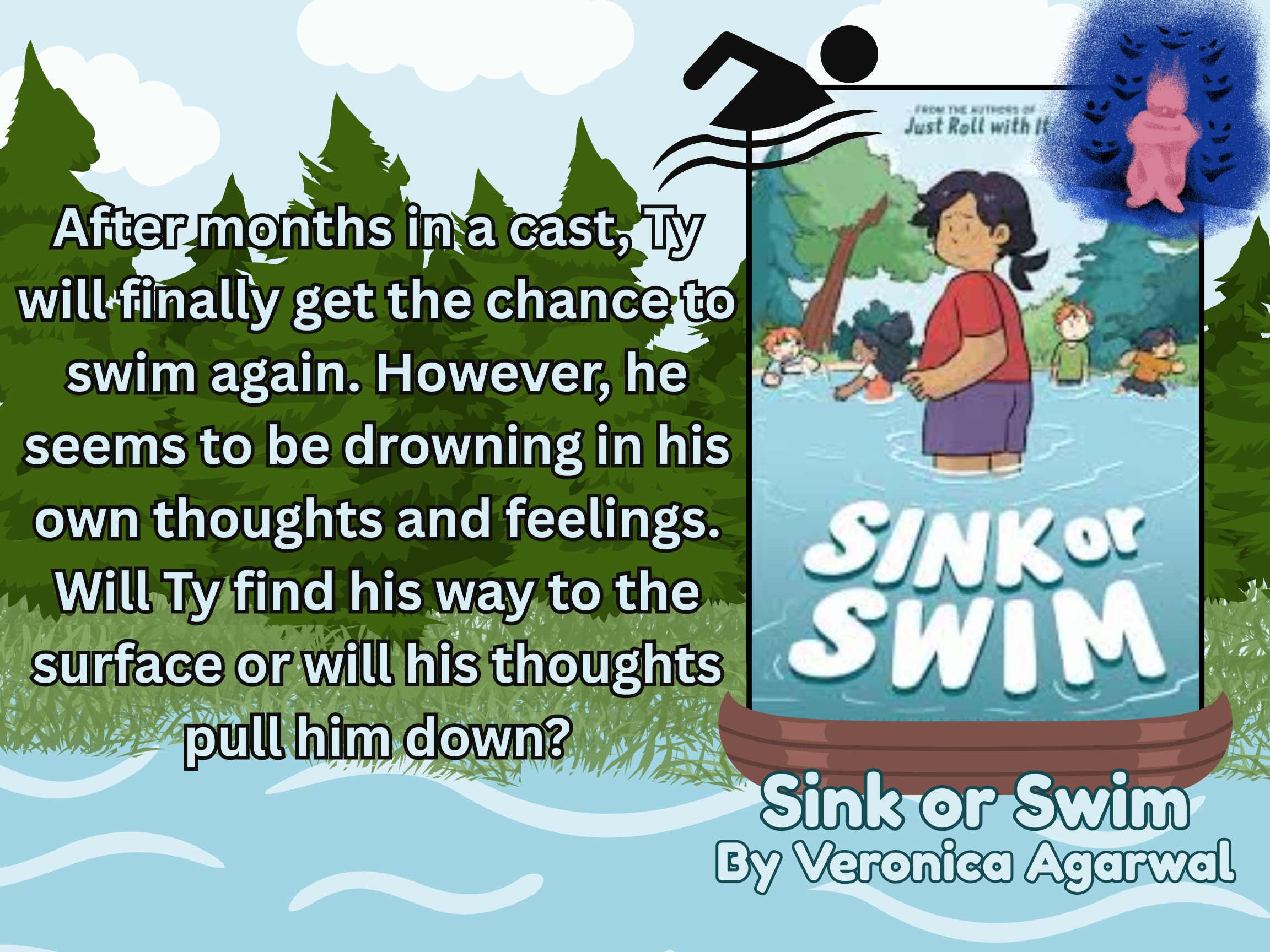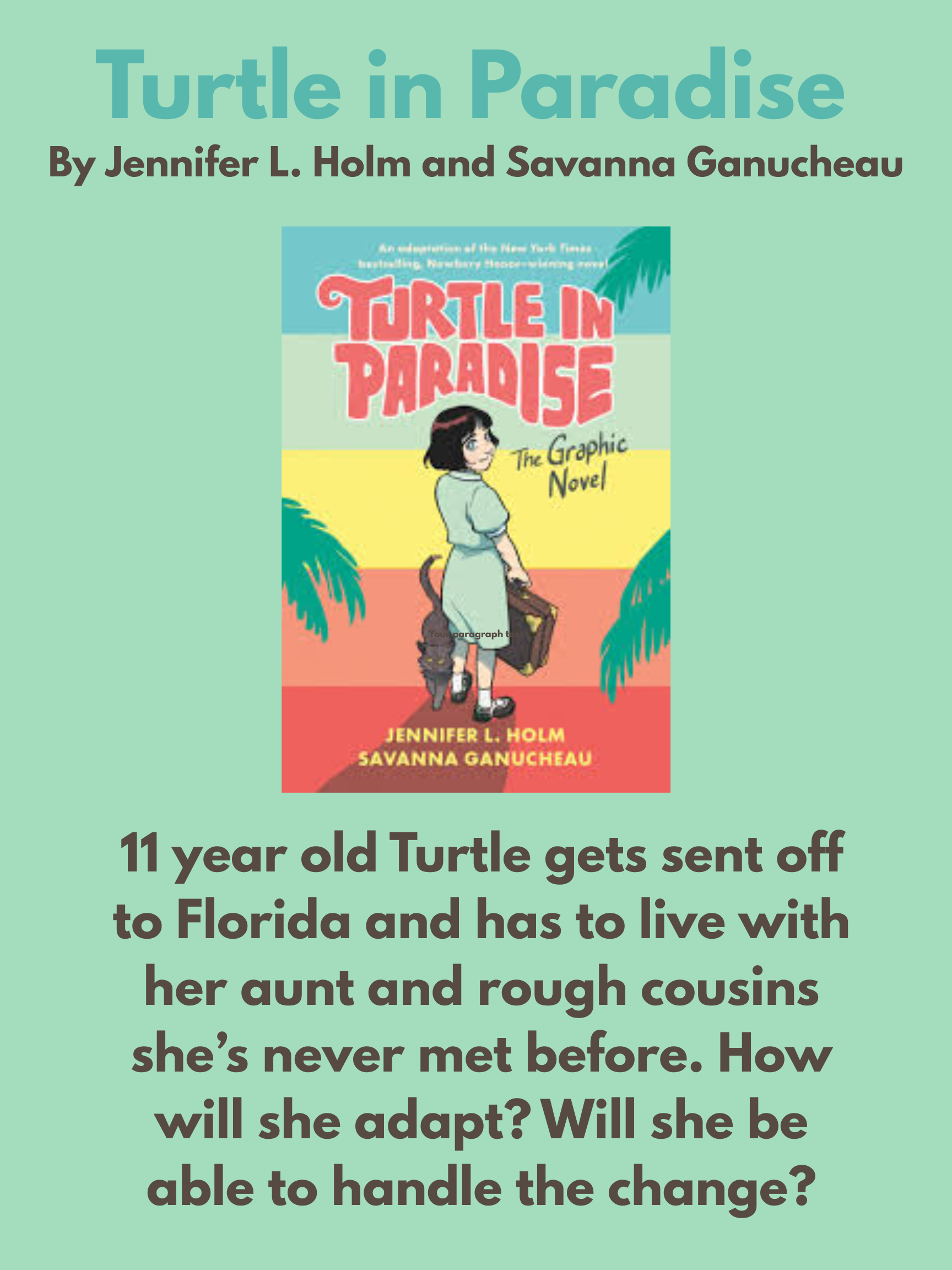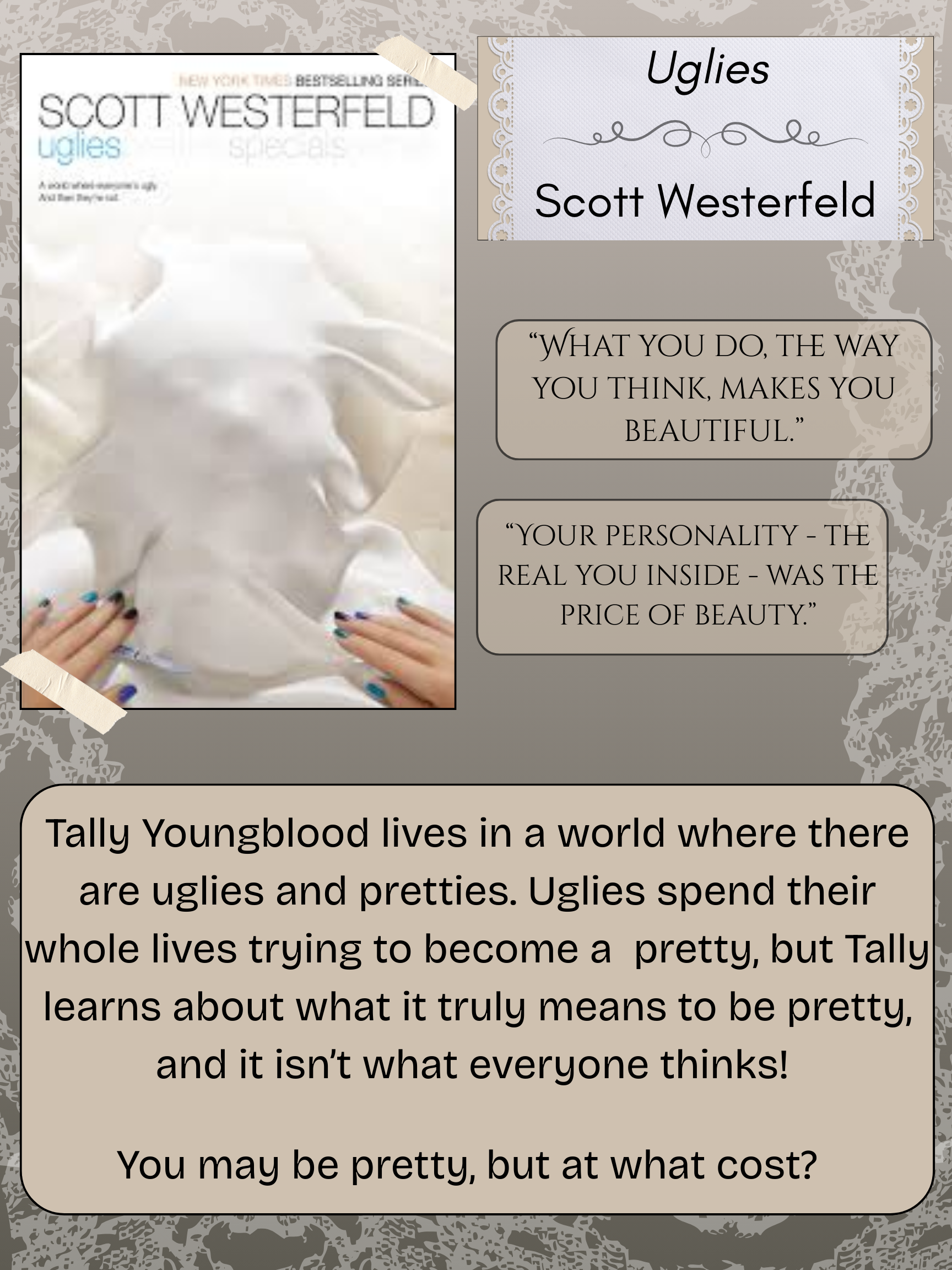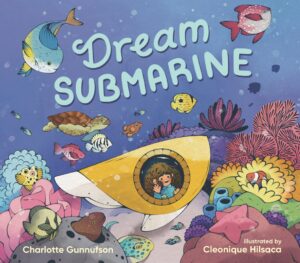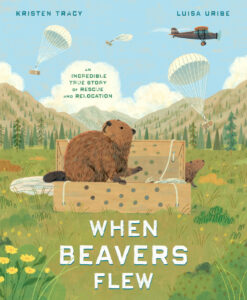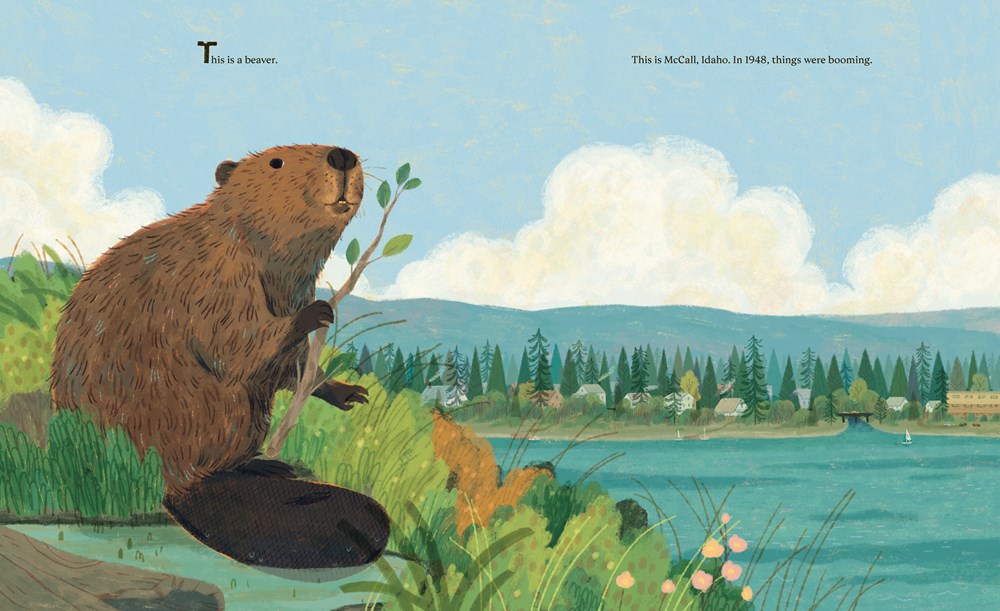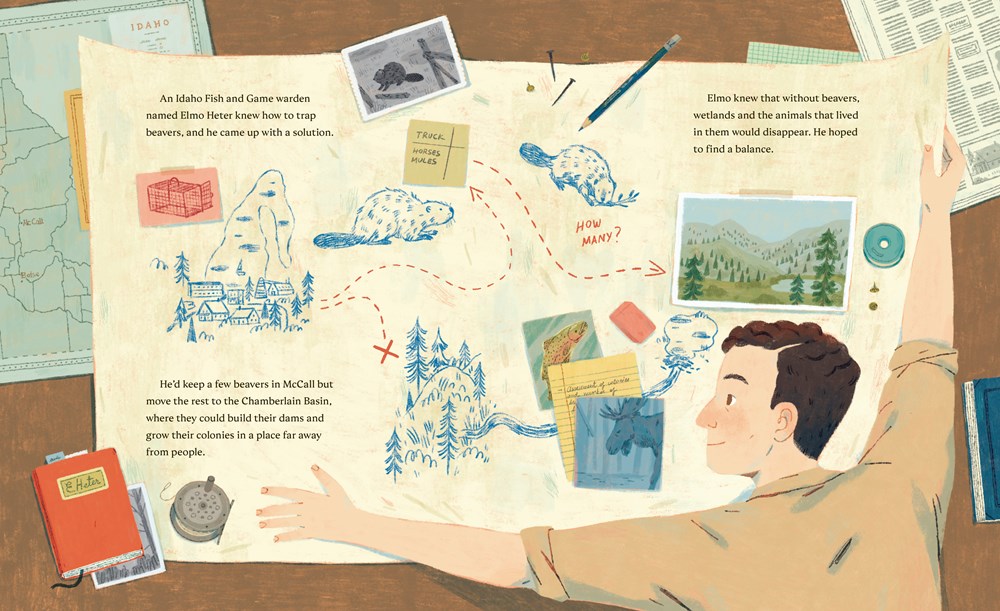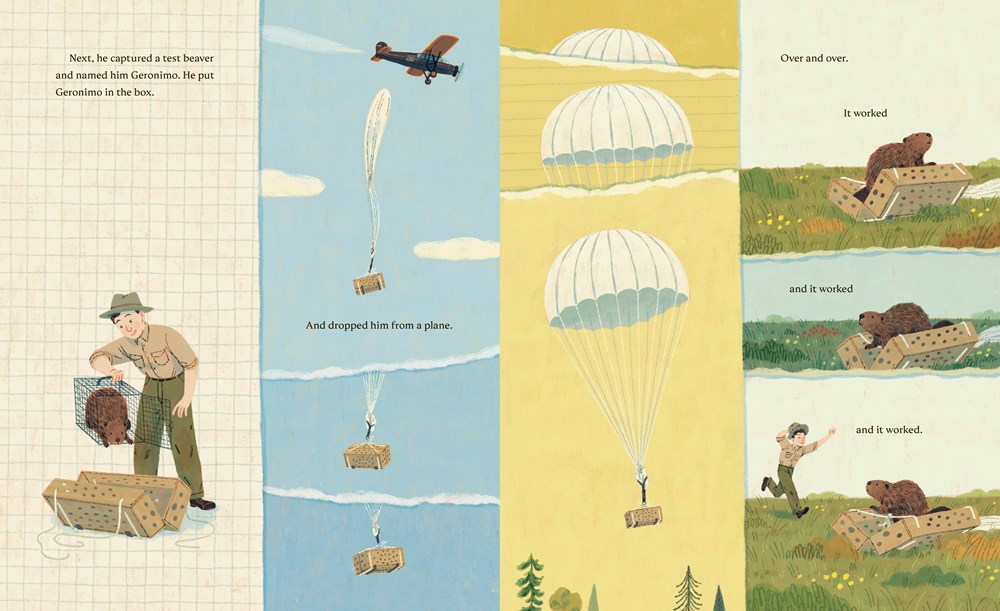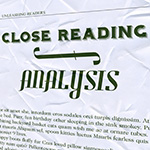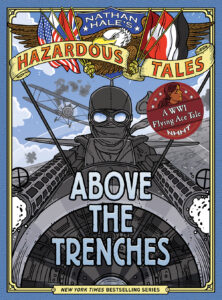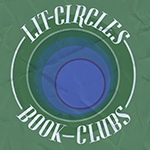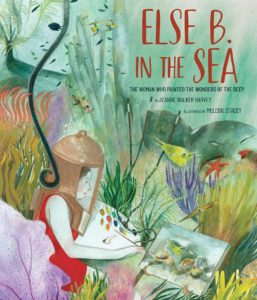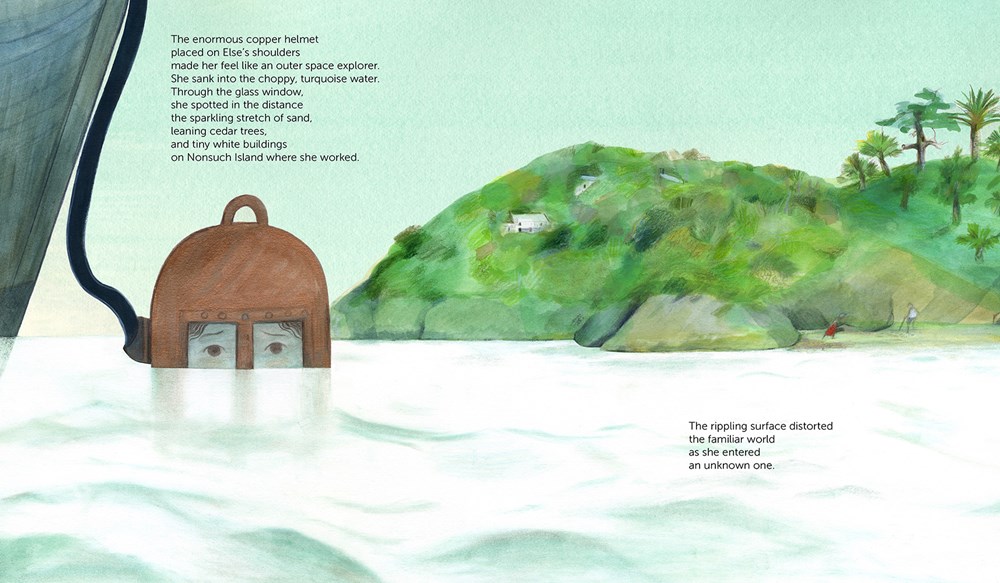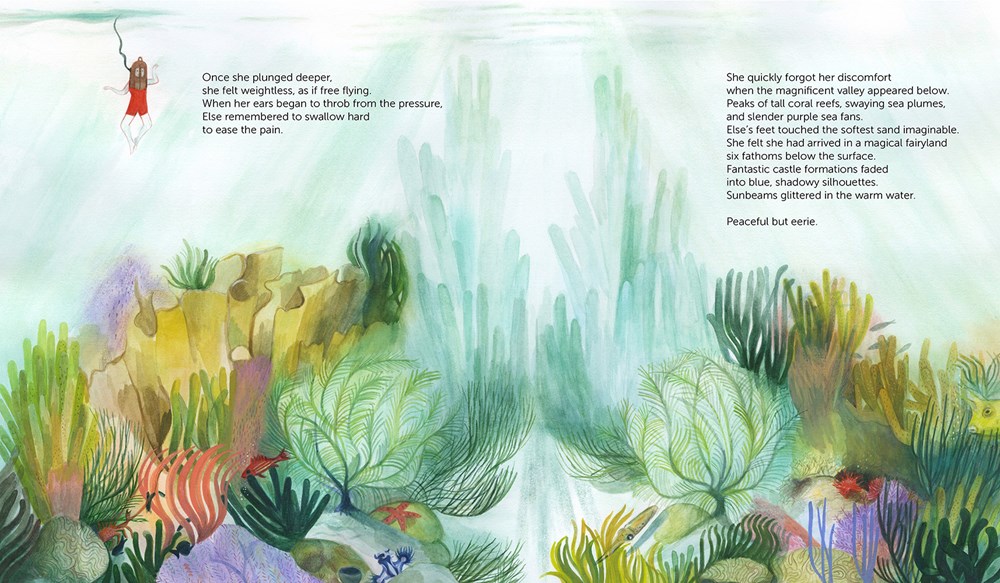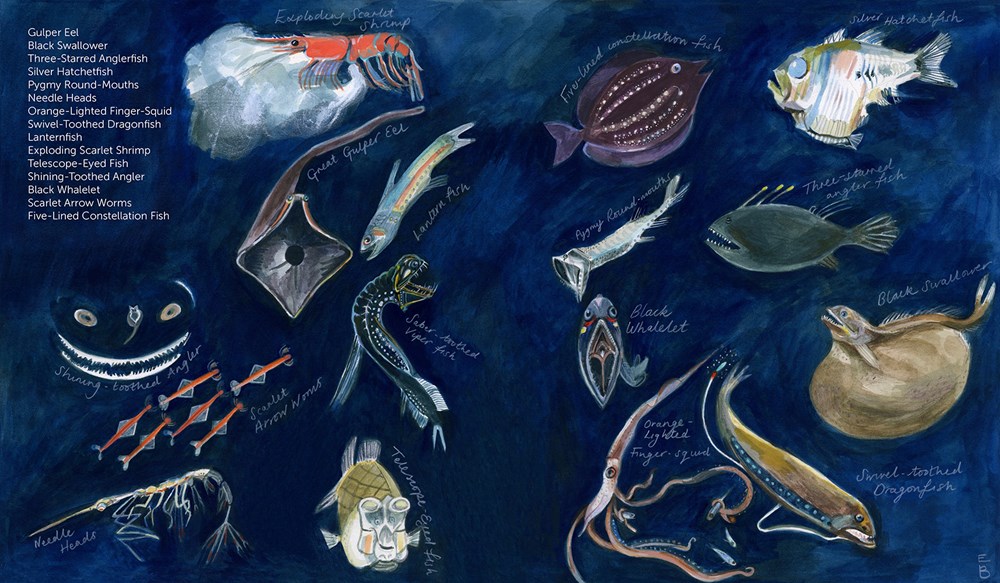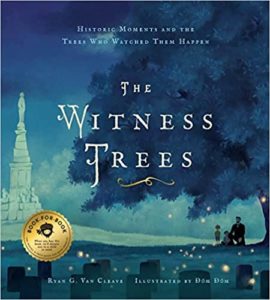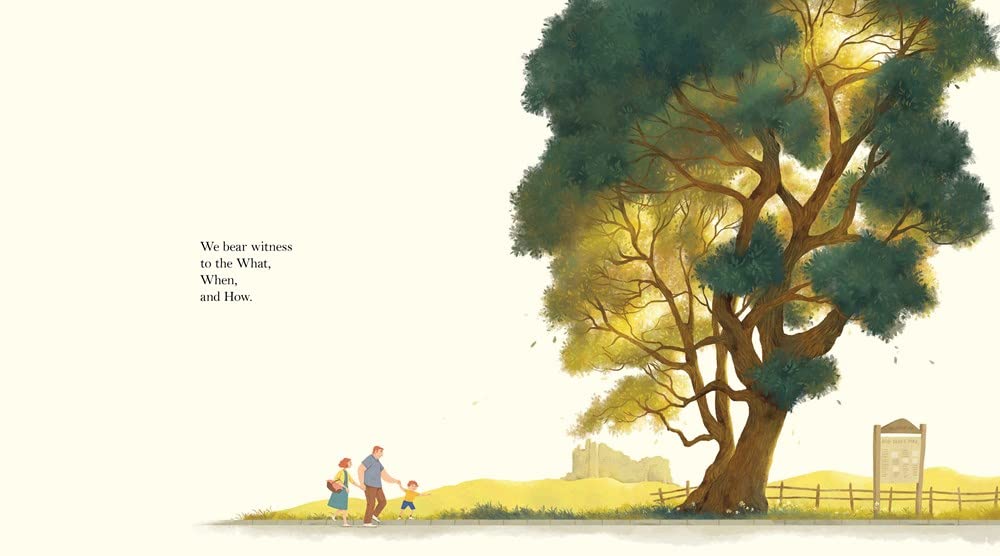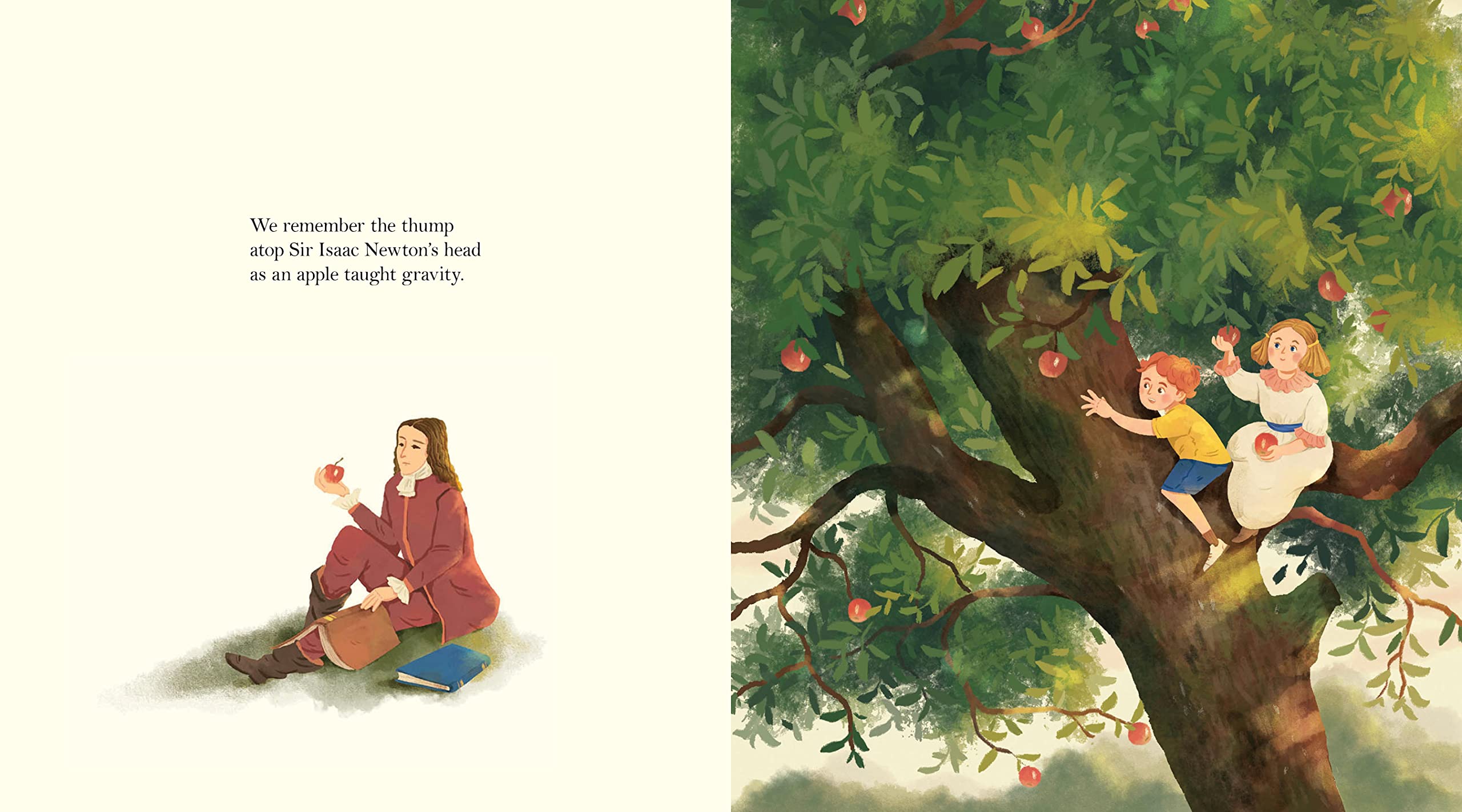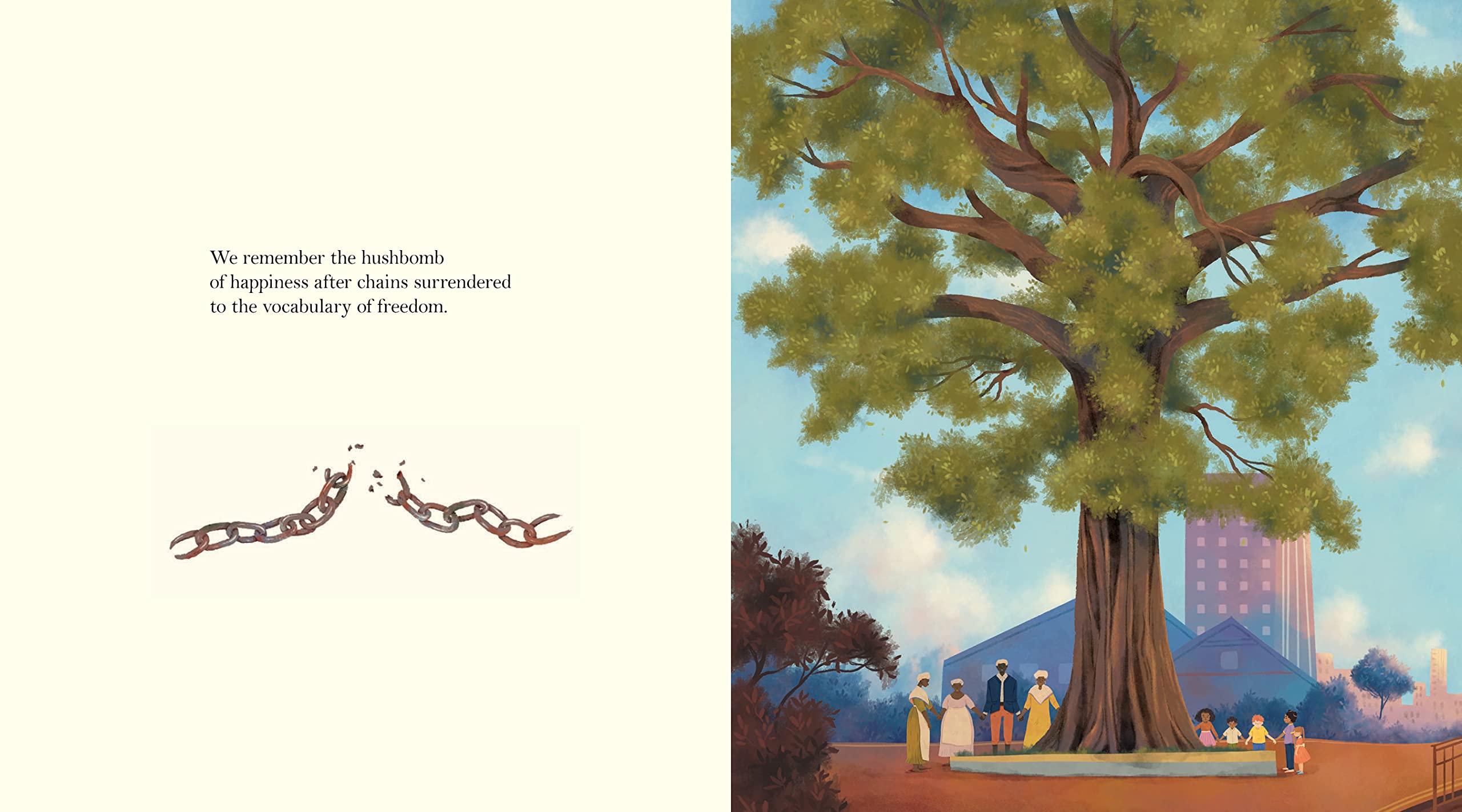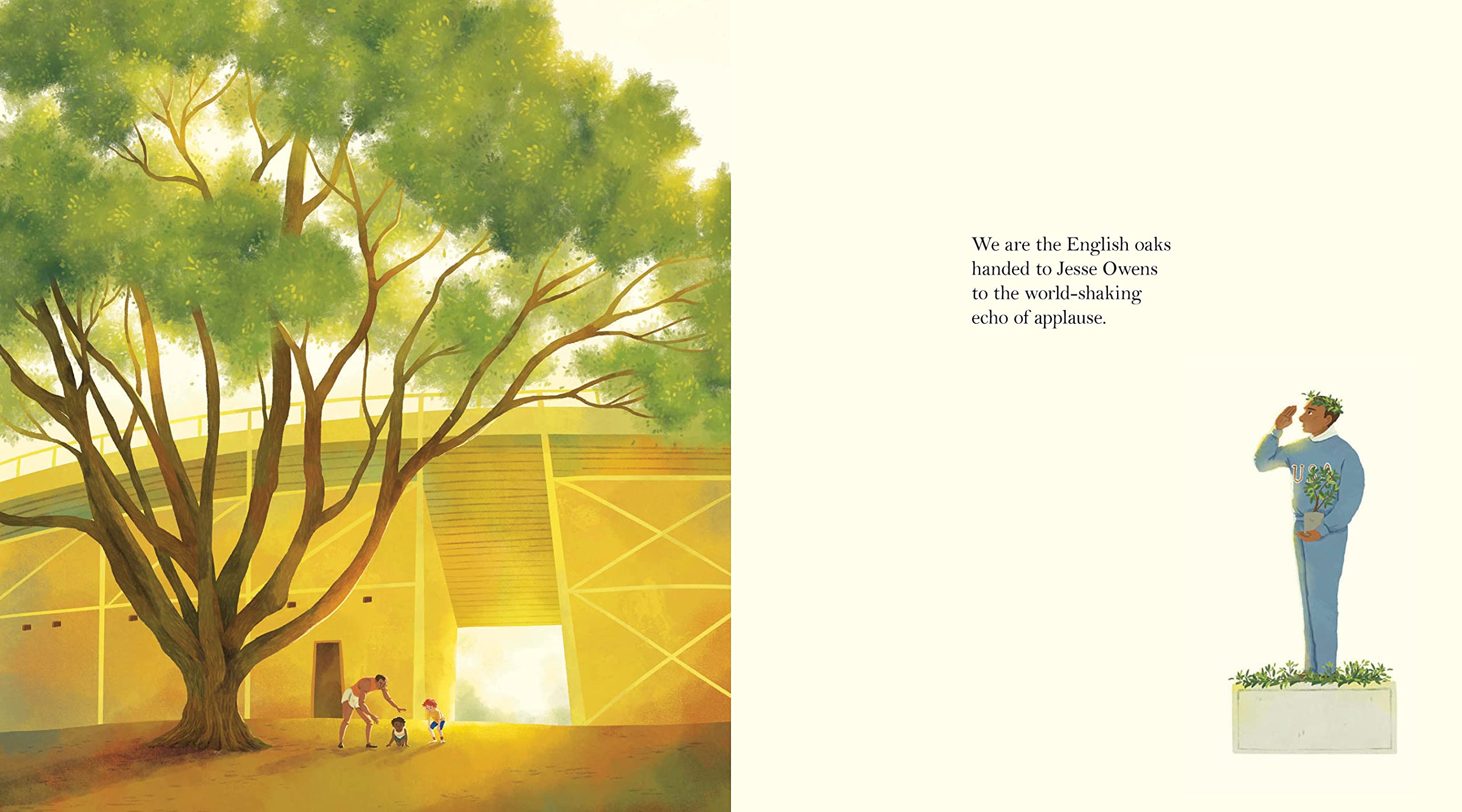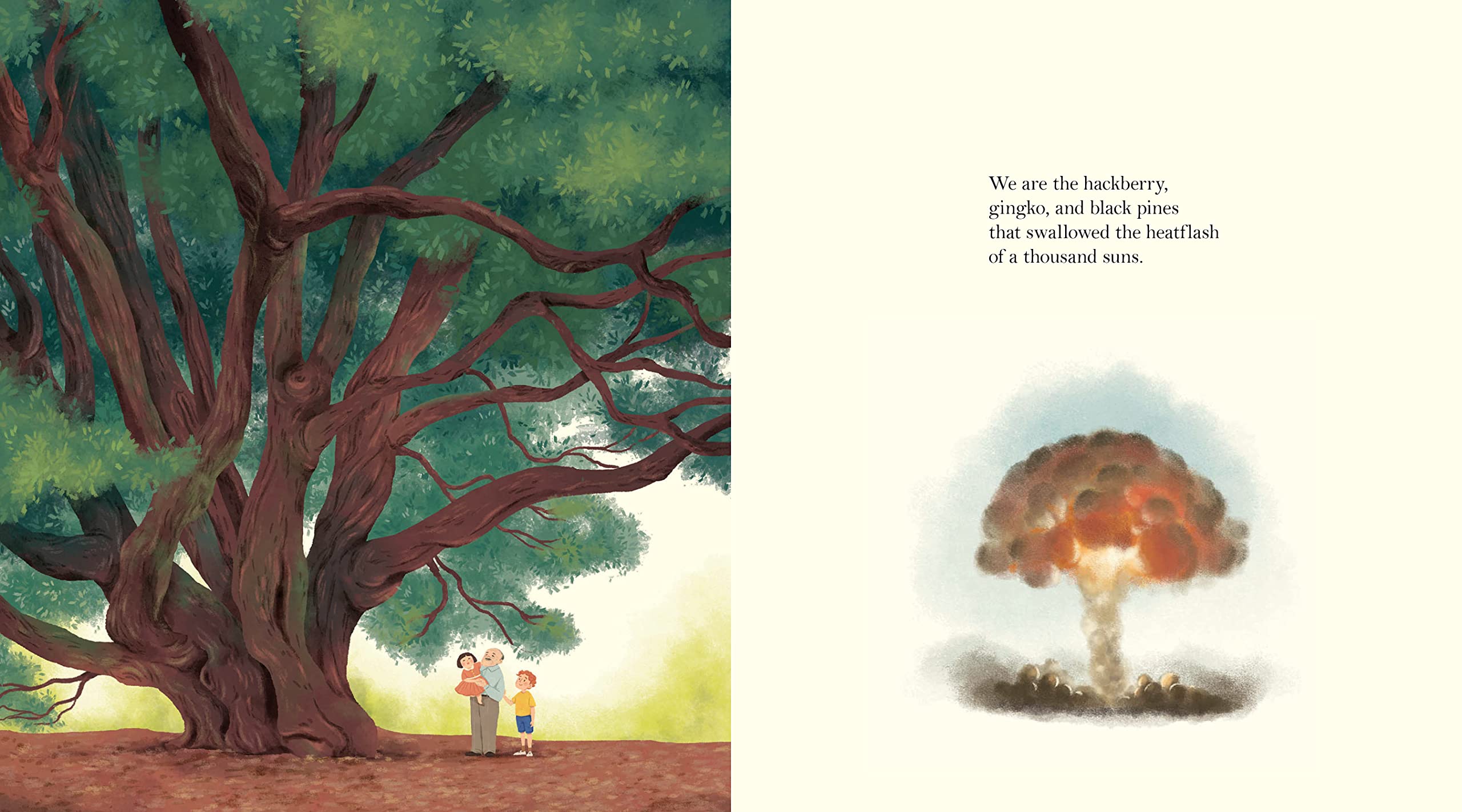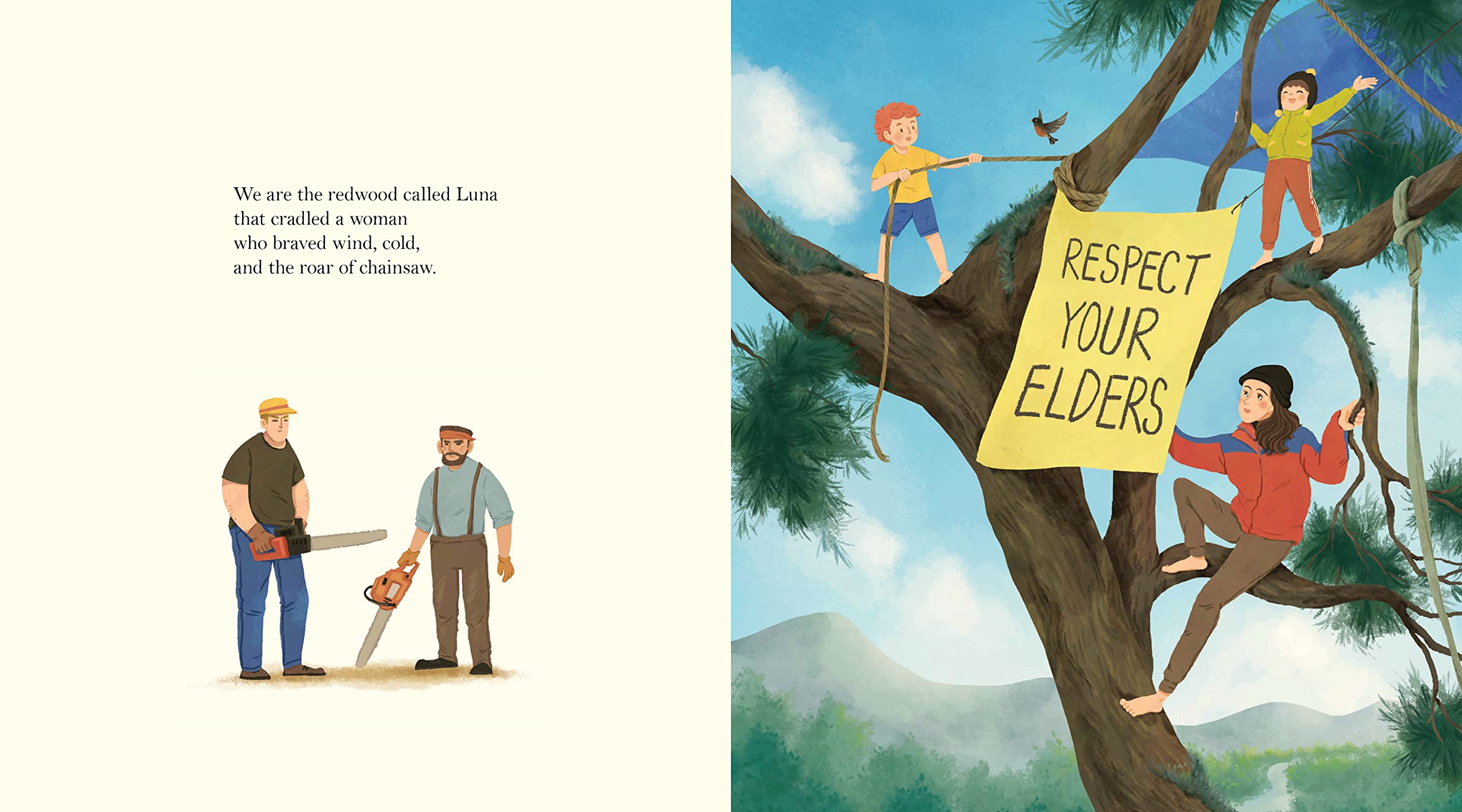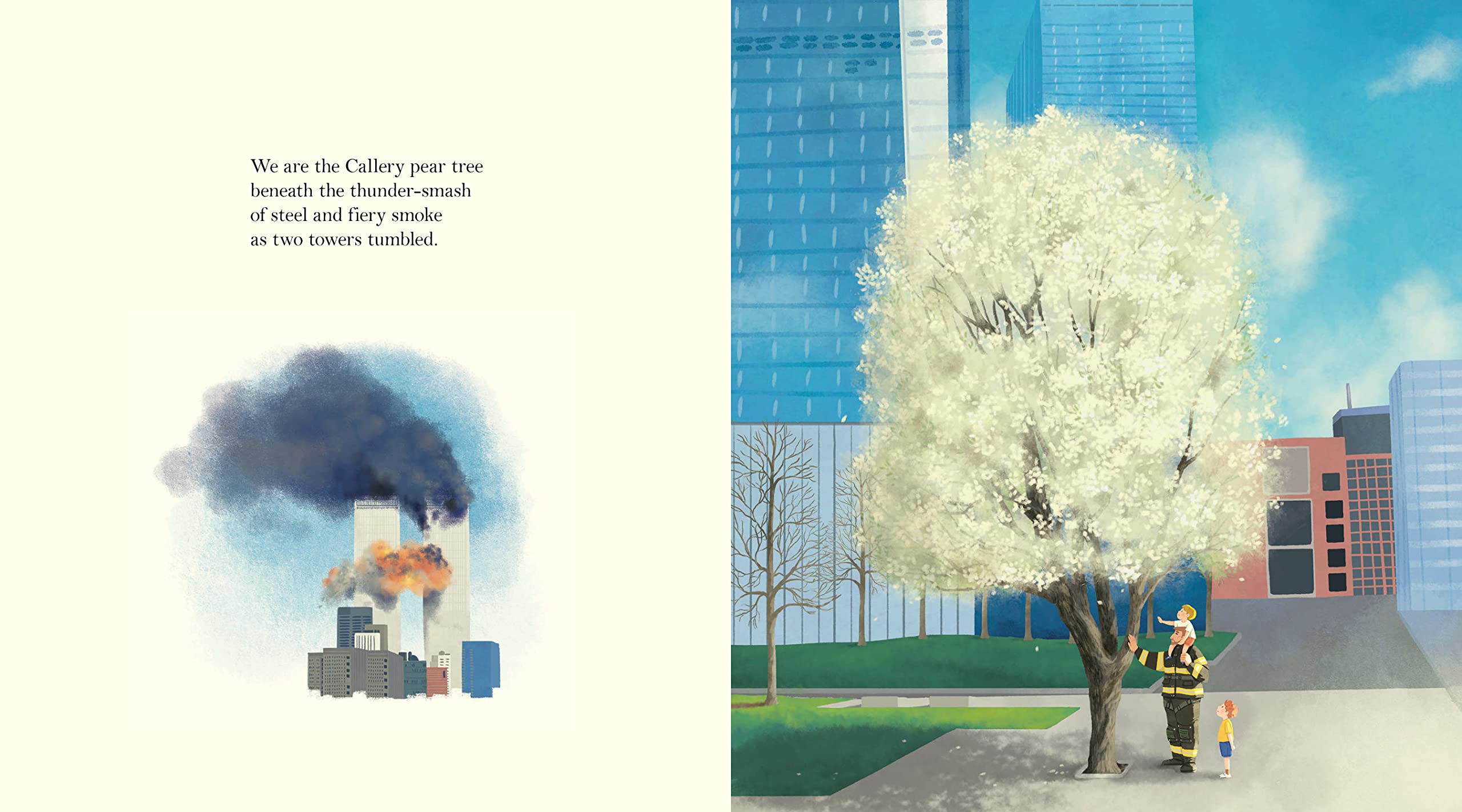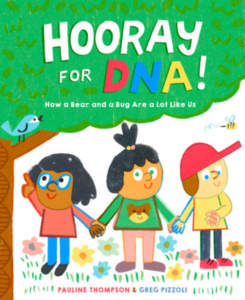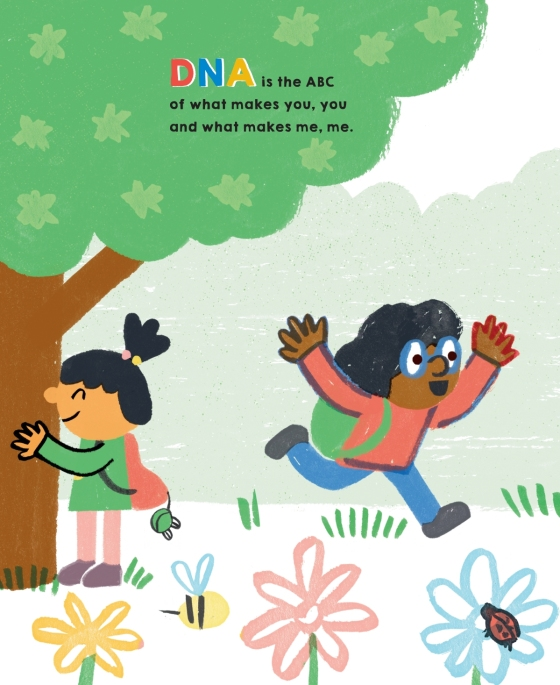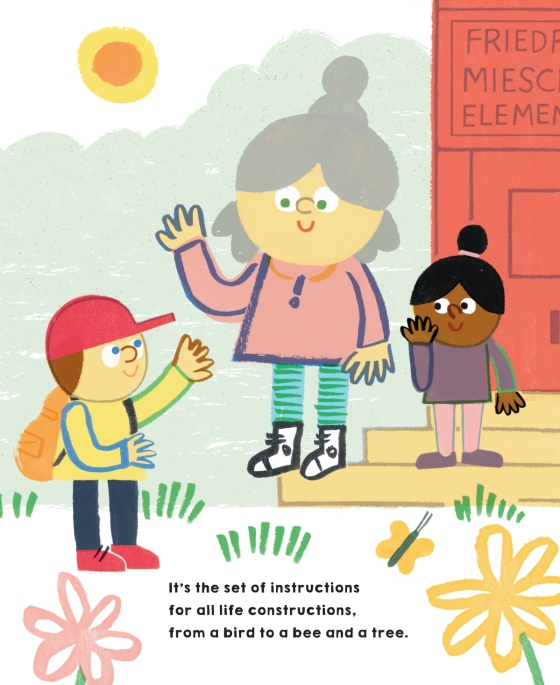My Student Literacy Leaders (students who help out in the library as their elective) recently were asked them to pick books they’ve loved that they feel should be checked out more than they are.
For these titles, they completed reading promotion projects which included Book Snaps (a snapshot of a book that is supposed to help get kids interested in the book), Title Talkers (a summary and extra info about the book to help share books with students), and Book Trailers (like a movie trailer but for a book).
Here are the titles they decided to promote (alphabetical by title) with some examples of their projects:
- 12 to 22 by Jen Calonita
- All’s Faire in Middle School by Victoria Jamieson
- A-Okay by Jarad Greene
- Amari and the Night Brothers by B.B. Alston
- Among the Hidden by Margaret Peterson Haddix
- Awkward by Svetlana Chmakova
- Baby-Sitters Little Sister: Karen’s Witch by Katy Farina, Created by Ann M. Martin
- Bedhead Ted by Scott SanGiacomo
- Big Apple Diaries by Alyssa Bermudez
- Blended by Sharon Draper
- Class Act by Jerry Craft
- Concealed by Christina Diaz Gonzalez
- Coraline by Neil Gaiman
- Cross Game: Vol. 1 by Mitsuru Adachi
- Curse So Dark and Lonely by Brigid Kemmerer
- Daybreak on Raven Island by Fleur Bradley
- Delirium by Lauren Oliver
- The Diary of a Young Girl by Anne Frank
- The Dirt Diary by Anna Staniszewski
- Divergent by Veronica Roth
- The Door of No Return by Kwame Alexander
- Dress Coded by Carrie Firestone
- The Dumbest Idea Ever by Jimmy Gownley
- Escape by K.R. Alexander
- Esperanza Rising by Pam Muñoz Ryan
- Fever 1793 by Laurie Halse Anderson
- Fourth Stall by Chris Rylander
- Frizzy by Claribel A. Ortega and Rose Bousamra
- From the Desk of Zoe Washington by Janae Marks
- Frost Blood by Elly Blake
- Fruits Basket: Omnibus 1 by Natsuki Takaya
- The Genius Files: Mission Unstoppable by Dan Gutman
- Goddess Girls: Athena the Brain by Joan Holub and Suzanne Williams
- Go with the Flow by Lily Williams and Karen Schneemann
- Grace Needs Space by Benjamin A. Wilgus and Rii Abrego
- Ground Zero by Alan Gratz
- Holes by Louis Sachar
- Hooky: Vol. 1 by Míriam Bonastre Tur
- House Arrest by K.A. Holt
- How I Became a Spy by Deborah Hopkinson
- How to Train Your Dragon by Cressida Cowell
- Huda F Cares? by Huda Fahmy
- Insignia by S.J. Kincaid
- I Survived: The Destruction of Pompeii, 79 A.D. by Lauren Tarshis
- I Survived: The Eruption of Mt. St. Helens, 1980 by Lauren Tarshis
- I Survived: The Nazi Invasion, 1944 (Graphic Novel) by Lauren Tarshis and Álvaro Sarraseca
- Join the Club, Maggie Diaz by Nina Moreno
- Just Roll with It by Veronica Agarwal and Lee Durfey-Lavoie
- Katie the Catsitter by Colleen A.F. Venable and Stephanie Yue
- Keeper of the Lost Cities by Shannon Messenger
- Land of Stories: The Wishing Spell by Chris Colfer
- Legend by Marie Lu
- The Legend of Zelda: Ocarina of Time by Akira Himekawa
- The Lizzie Borden Ax Murders by Carla Mooney
- Looking Up by Stephan Pastis
- The Lost Hero by Rick Riordan
- Making Friends by Kristen Gudsnuk
- Matched by Ally Condie
- Measuring Up by Lily Lamotte and Ann Xu
- Midnight at the Barclay by Fleur Bradley
- Miss Quinces by Kat Fajardo
- Moo by Sharon Creech
- The Murders of Tupac and Biggie Smalls by Sue Bradford Edwards
- No Place by Todd Strasser
- One Punch Man by ONE
- Orange: The Complete Collection, Volume 1 by Ichigo Takano
- Orbiting Jupiter by Gary Schmidt
- Orphan Island by Laurel Snyder
- Out of My Mind by Sharon Draper
- P.S. I Like You by Kasie West
- Querido Evan Hansen by Val Emmich, Steven Levenson, Ben J. Pasek, and Justin Paul
- Puzzled by Pan Cooke
- Real Friends by Shannon Hale and LeUyen Pham
- Refugee by Alan Gratz
- Renegades by Marissa Meyers
- Restart by Gordon Korman
- School Trip by Jerry Craft
- Scout is Not a Band Kid by Jade Armstrong
- The Selection by Kiera Cass
- Shadow and Bone by Leigh Bardugo
- Shiver by Maggie Stiefvater
- Sick Kids in Love by Hannah Moskowitz
- Sink or Swim by Veronica Agarwal
- Sisters by Raina Telgemeier
- Slacker by Gordon Korman
- Speak by Laurie Halse Anderson
- Spy School by Stuart Gibbs
- Trapped by Michael Northrop
- The Tryout by Christina Soontornvat and Joanna Cacao
- Turtle in Paradise by Jennifer L. Holm and Savanna Ganucheau
- Twins by Varian Johnson and Shannon Wright
- Uglies by Scott Westerfeld
- Unplugged by Gordon Korman
- Unwind by Neal Shusterman
- War Cross by Marie Lu
- When Stars are Scattered by Victoria Jamieson and Omar Mohamed
- White Cat by Holly Black
- The Wild Robot by Peter Brown
- Wings of Fire: The Dragonet Prophecy by Tui T. Sutherland
- Wonder by R.J. Palacios
- The Young Elites by Marie Lu
Thank you to my students for sharing their favorite books and creating these great reading promotion projects!

